Introduction
A Proof of Concept (POC) is a crucial step in the development of new technologies or products. It involves conducting a small-scale experiment to test the feasibility of a concept and determine if it can be successfully implemented.
In industries like computer vision and smart home automation, where advancements are frequent, a POC provides a controlled environment to evaluate the potential of innovative ideas. By prioritizing a POC, businesses can mitigate risks, identify challenges early on, and align their projects with strategic objectives.
Furthermore, involving stakeholders and users throughout the process ensures that the final product meets their needs and expectations. In this article, we will explore the importance of a POC, key elements of a successful POC, and best practices to follow. By following these guidelines, businesses can transform their vision into a tangible, functioning reality.
What is a Proof of Concept?
Embarking on the development of a new technology or product, it's paramount to begin with a Proof of Concept (POC). A POC is essentially a small-scale experiment designed to test whether your concept is technically feasible.
This step is not about showcasing the potential financial returns, but rather, it's about answering the crucial question: 'Can this actually be done?' For instance, in the burgeoning field of computer vision, many overlook the strides made in the technology and the importance of community and accessible documentation.
A POC in such a context provides a tangible way to understand these advances and evaluate the core features of the technology under consideration. An exemplary case of POC's significance is the Vigicard project, which selected the Tezos blockchain for its robust security features and energy-efficient protocol, crucial for the sensitive nature of medical data.
This decision was made after careful assessment of the technology's capabilities to meet the project's stringent requirements. Similarly, assumptions in product development often fall into categories such as desirability, feasibility, and usability. A POC allows teams to challenge these assumptions early on. Reflecting on the words of Jared Spool, a software prototype is akin to an architect's model, providing a preliminary view of the final product, which is instrumental for developers and stakeholders alike. By prioritizing a POC, you're taking a measured step towards transforming a vision into a tangible, functioning reality.
Why is a Proof of Concept Important?
The integration of Business-Led IT is reshaping how companies approach technology as part of their core strategy. Rather than having separate technology and business strategies, there's now a unified approach where technology supports business goals.
This paradigm shift has led to a deeper involvement of business users and leaders in technology decisions, yielding significant benefits. For instance, the deployment of smart tools and applications can accelerate the development of minimum viable products (MVPs), thereby enhancing time to market for new products.
With business leaders better understanding their needs, IT can focus on facilitating the acquisition of the right tools, streamlining processes and boosting productivity. As the Internet of Things (IoT) continues to expand, becoming an integral part of our daily lives and business operations, the need for careful selection of technology becomes more pronounced.
The global market for smart home automation, a subset of IoT, is expected to reach $40 billion, highlighting the trend towards a more connected world. This growth underscores the importance of a Proof of Concept (PoC), which acts as a small-scale project to evaluate the feasibility and practicality of an idea.
PicsArt essential for risk mitigation, allowing businesses to identify challenges early on in a controlled environment. By investing in a PoC before a full-scale implementation, companies can make informed decisions, avoid costly mistakes, and ensure that their strategic objectives are met with cost efficiency. The collaborative relationship between business users and IT is crucial. While IT departments have the technical expertise to discern which software is optimal, they may not fully grasp the specific business challenges at hand. Business users, on the other hand, have a clear understanding of the problems they face, which can guide them in choosing the right software or vendor. This synergy between business acumen and IT proficiency is vital for the successful execution of technology strategies that align with business objectives.
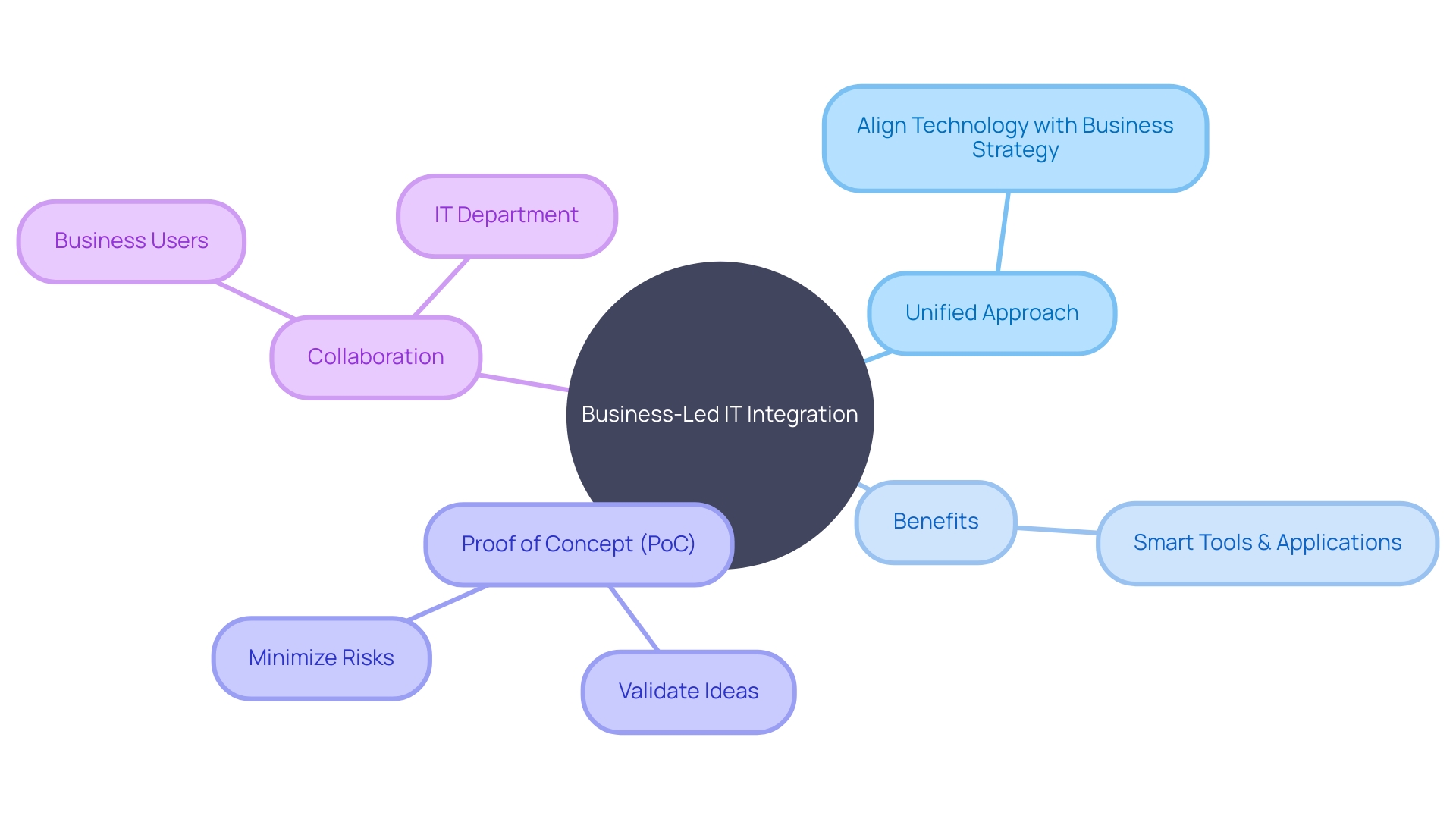
Validating the Viability of an Idea
Conducting a Proof of Concept (POC) is a strategic step in the validation of a technological idea or innovation. By implementing a POC, a business can test the fundamental technical aspects of a new product, solution, or system on a small scale to determine its feasibility.
This process is particularly vital in the rapidly evolving field of computer vision, where advancements are frequent and the practical application of such technology can be underestimated by those new to the area. A POC is not merely an exercise in technical validation, but also a method to identify and address potential risks and challenges that may not be apparent at the outset.
For instance, as the digital economy expands and decentralized finance (DeFi) systems like Ethereum show resilience against discrimination and downtime, the importance of reliable and innovative technology solutions becomes clear. A POC provides an opportunity to explore these solutions in a controlled environment before committing to a wider deployment.
Furthermore, the global smart home automation market is projected to reach $40 billion by 2020, signaling a surge in the integration of Internet of Things (IoT) technologies into everyday life. In this context, POCs become essential in navigating the complexities and challenges of IoT implementation, ensuring that new concepts are not only technically sound but also strategically aligned with business objectives. By focusing on the core question, "Can it be done? ", a POC helps to clarify goals, identify gaps in the market, and assess the potential for creating a unique offering that addresses unmet needs or underexplored areas.
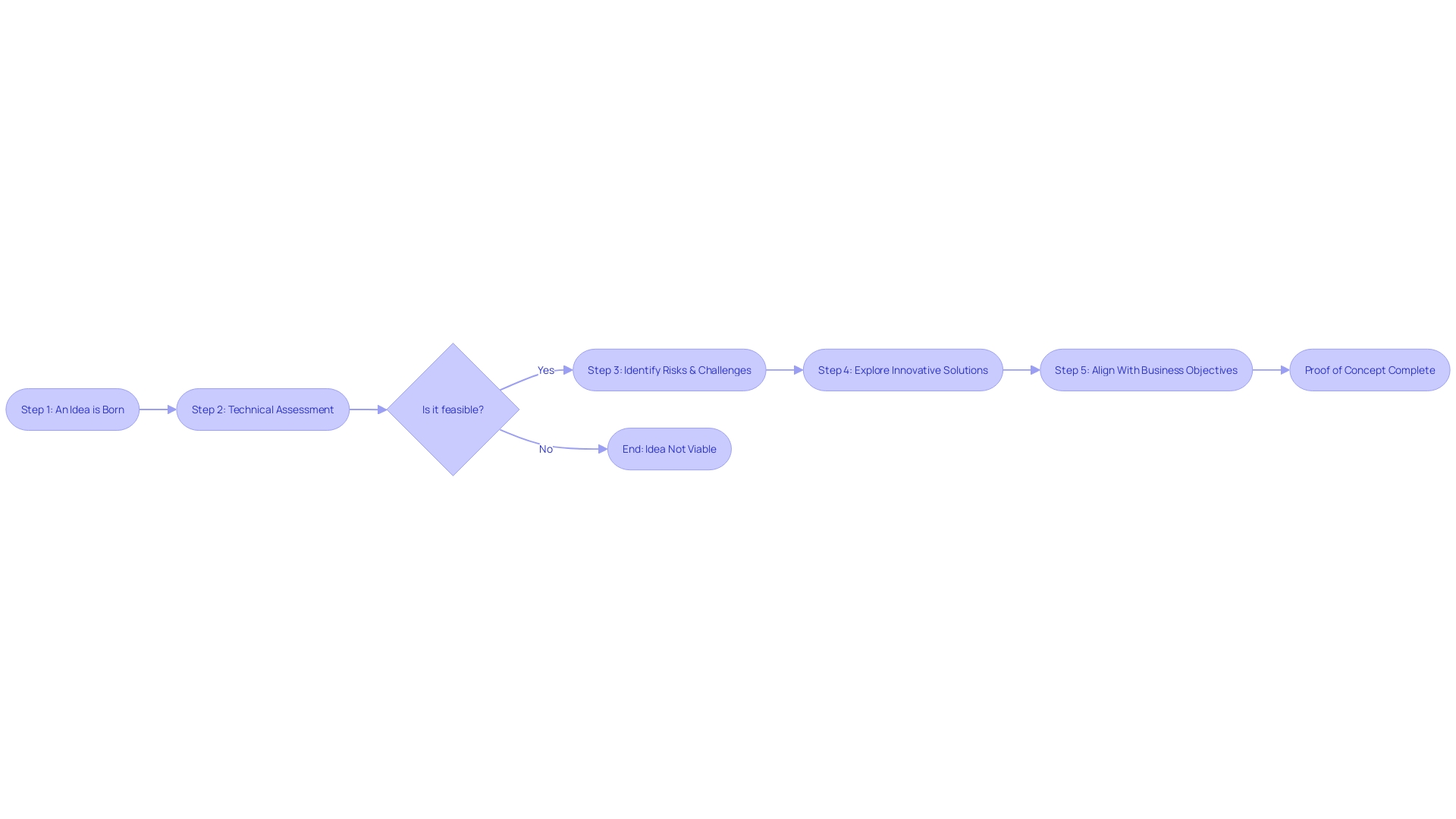
Gaining Stakeholder Support
The art of storytelling transcends simply sharing information; it's about crafting a narrative that resonates with your audience, compelling them to see the vision and potential of your ideas. A successful Proof of Concept (POC) is not just a demonstration of a product's functionality but a story that captivates stakeholders, illustrating the transformative power of the solution and its ability to address real-world problems.
It's this narrative that secures the backing and resources necessary for further development. As we've seen, the technology itself is not the hero of this narrative; rather, it's the methodology and approach to solving client problems that take center stage.
This philosophy is echoed in the words of industry experts, who assert that 'technology alone has little to do with digital procurement success, but stakeholder communication and collaboration.' A POC that effectively communicates this, focusing on the mindset and methodology before technology, has a greater chance of success. In fact, the high failure rate of e-procurement initiatives highlights the pitfalls of relying solely on technology without adequate emphasis on these human elements. Therefore, a well-executed POC is a story well told, one that underscores the solution's marketability and potential value through a lens of human-centric problem-solving.
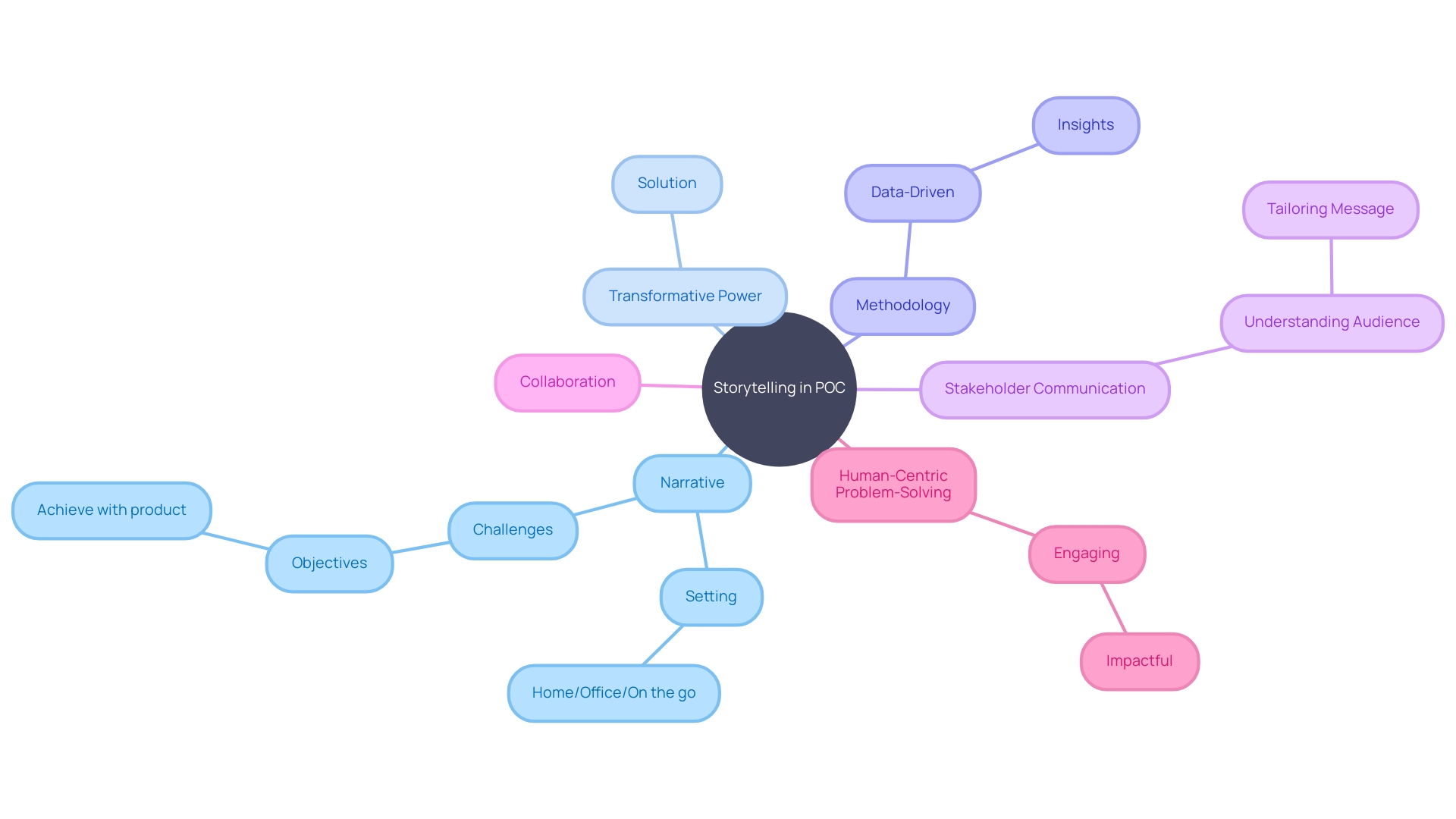
Minimizing Development Risks
Undertaking a Proof of Concept (POC) is a strategic approach to validate the technical feasibility of a new idea before committing to a full-scale project. It’s a small-scale experiment that answers the pivotal question, "Can it be done?"
without the initial need to demonstrate business value or return on investment. This method is particularly beneficial in the realm of technology, such as in the computer vision field, where the rapid pace of innovation can be underestimated by those new to the domain.
The significance of a POC lies in its ability to reveal potential challenges and risks at an early stage, allowing for a more informed decision-making process. It's a cost-effective solution that prevents the larger financial implications of diving into an unproven concept.
The global smart home automation market, expected to reach $40 billion by 2020, underscores the growing importance of POCs in testing the waters of innovative concepts like IoT before widespread adoption. Moreover, the Developer Experience Lab's insights during the pandemic have shifted the focus from merely increasing developer productivity to enhancing the overall developer experience (DevEx). This pivot highlights the necessity for a supportive environment where ideas can be tested without the pressures that lead to burnout or errors. In essence, a POC is a crucial step in the development process, providing a controlled setting to pinpoint and address potential issues, ensuring that new technologies align with strategic goals, and fostering an environment that values the experience of the developer as much as the end product.
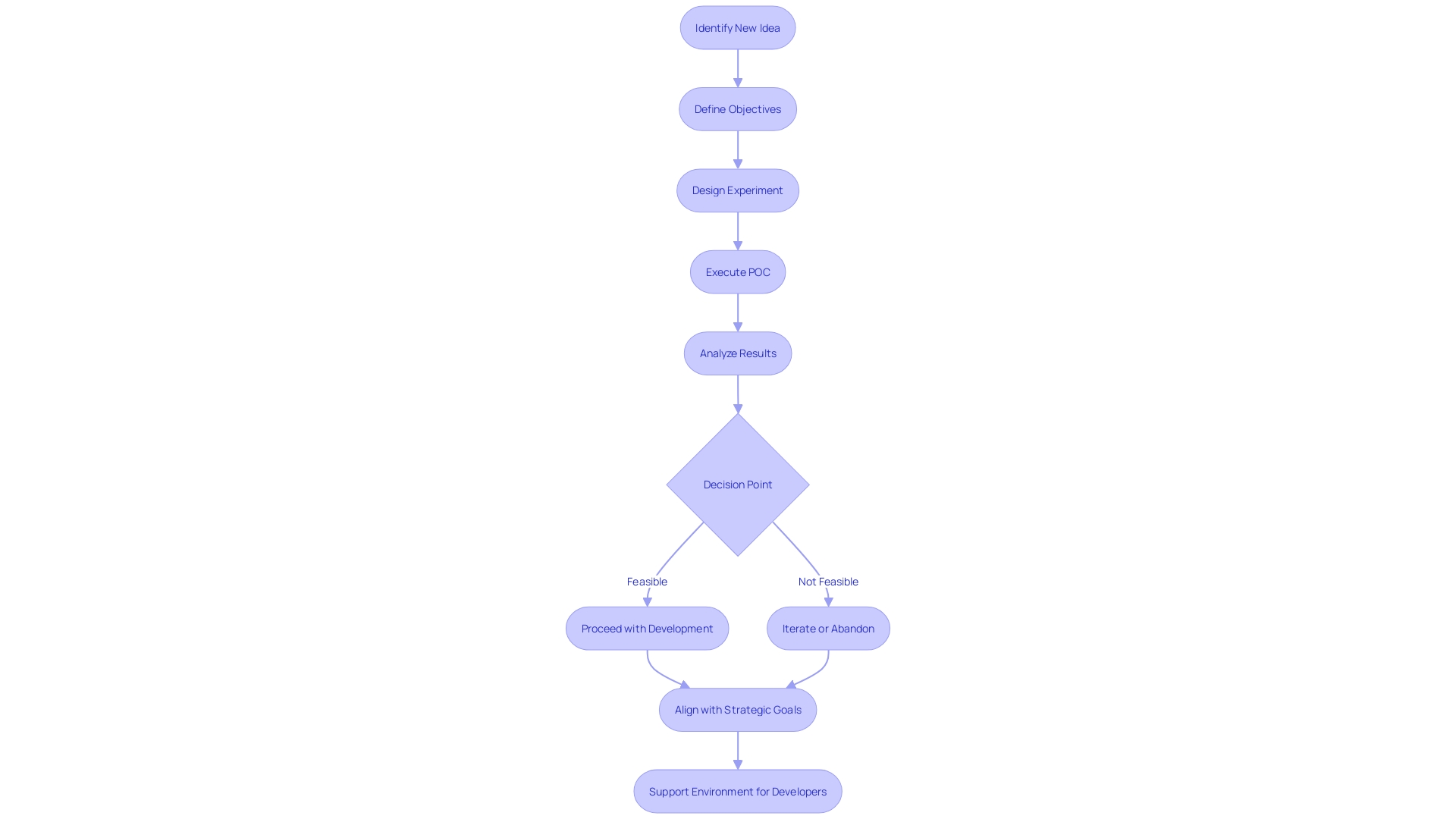
Key Elements of a Proof of Concept
A Proof of Concept (PoC) is more than a simple prototype; it's a powerful tool that demonstrates the practical potential of a proposed IT solution. The essence of a PoC lies in its ability to showcase how a concept can be executed on a small scale while aligning with strategic business goals. It's a preemptive measure that allows stakeholders to evaluate the feasibility, viability, and risk factors associated with a project before committing significant resources.
Through a PoC, businesses can explore innovative solutions, like Nets did with their digital payment project, translating complex technical data into user-friendly formats, thereby enhancing user engagement and onboarding processes. Similarly, the Vigicard project leveraged blockchain technology, emphasizing the importance of security and real-time data sharing in patient monitoring, an approach that underscores the need for a PoC to address specific industry challenges. A well-crafted PoC should provide a clear technology adoption roadmap, effectively communicating the transition from current operations to the desired technological outcome.
It should also encompass detailed project proposals, outlining scope, timelines, and budgetary considerations, ensuring that all stakeholders are on the same page. As the digital landscape evolves, it's critical to remember that technology itself is not the sole driver of success; it's the strategic application of technology, underscored by stakeholder communication and collaboration, that truly makes a difference. Ultimately, a PoC is a strategic investment that aids in cost efficiency and risk mitigation, proving its worth well before a full-scale implementation is considered.
Clear Objectives
Embarking on a Proof of Concept (POC) is akin to an architect creating a scale model before constructing a grand building. It's a preliminary visualization, enabling a deep understanding of the project's nuances and providing a compelling presentation of the concept.
Similarly, a POC in the IT realm is a crucial small-scale exercise to demonstrate a concept's feasibility. It's essential to focus on specific technical aspects without getting sidetracked by business value or ROI at this stage.
The core aim is to validate the question: 'Can it be done?' This approach is particularly vital in burgeoning fields like computer vision, where underestimating the progress and community support can lead to misaligned expectations.
By urging stakeholders to engage with the technology hands-on, they can better grasp its capabilities and limitations, ultimately aligning the POC with the project's overarching goals. In the realm of data projects, this is supported by the adaptation of the PESTEL framework—considering Data Availability, Skillset, Timeframe, Organizational Readiness, and Political Environment—to ensure a comprehensive understanding of the project's macro-elements. This strategic alignment is critical, as without it, even the most technically sophisticated Pics may fail to transition from impressive tech demonstrations to impactful, real-world applications. As we look towards a future where the IoT is expected to burgeon into a $40 billion market, the clarity and precision in crafting POCs become even more pivotal to bridging the gap between concept and reality.
Identifying Key Metrics
When implementing a Proof of Concept (POC) for IT projects, it's critical to establish key metrics to gauge its success. These metrics should encompass both quantitative and qualitative aspects. For instance, user engagement and conversion rates offer tangible evidence of a POC's impact, while cost savings reflect on financial prudence.
Moreover, performance indicators should delve into the nuanced behaviors of the system under test, as a good evaluation illuminates not just overall performance but also internal mechanisms and limitations. In the realm of IoT, the rise of smart home automation, expected to burgeon into a $40 billion market, exemplifies the need for rigorous Pics in technology adoption. Similarly, with the global tech spending by businesses and governments reaching trillions, aligning IT infrastructure investments with strategic objectives is paramount.
This alignment is crucial in realizing key business outcomes such as digital transformation, enhanced customer experiences, productivity gains, and cost efficiency, as highlighted by a recent IDC survey. By advocating for a blend of qualitative and quantitative metrics, businesses can capture a comprehensive picture of a POC's effectiveness. This approach not only measures the direct outcomes but also provides insights into potential improvements, ensuring that the technology in question can truly meet the strategic goals of the organization.
Choosing the Right Technologies
Embarking on the creation of a Proof of Concept (POC) is not just about demonstrating technical feasibility; it's about aligning with the evolving demands of your industry. In the manufacturing sector, for example, the recent shift towards product customization, competitive pricing, and optimized delivery has mandated a radical transformation in operational approaches. These market dynamics underscore the importance of selecting technologies for your POC that don't merely showcase capabilities but also resonate with these industry drivers.
Technologies such as digital twins, autonomous mobile robots, augmented reality, AI, and machine learning are not just buzzwords; they are the tools that will propel productivity and meet the modern expectations of customization and efficiency. When considering the technologies for your POC, reflect on the insights gathered from industry experts and market analysis. As one quote from a technical decision-maker suggests, understanding the past and present technical landscape is crucial for making informed decisions that are politically and operationally sound.
Furthermore, the cost implications of technology adoption cannot be overlooked. The frequency of tool usage by end-users and the appropriate unit of measure for cost analysis are pivotal considerations. By meticulously mapping out these facets during the project scoping phase, your POC will not only be a testament to potential but also a blueprint for practical and cost-effective implementation.
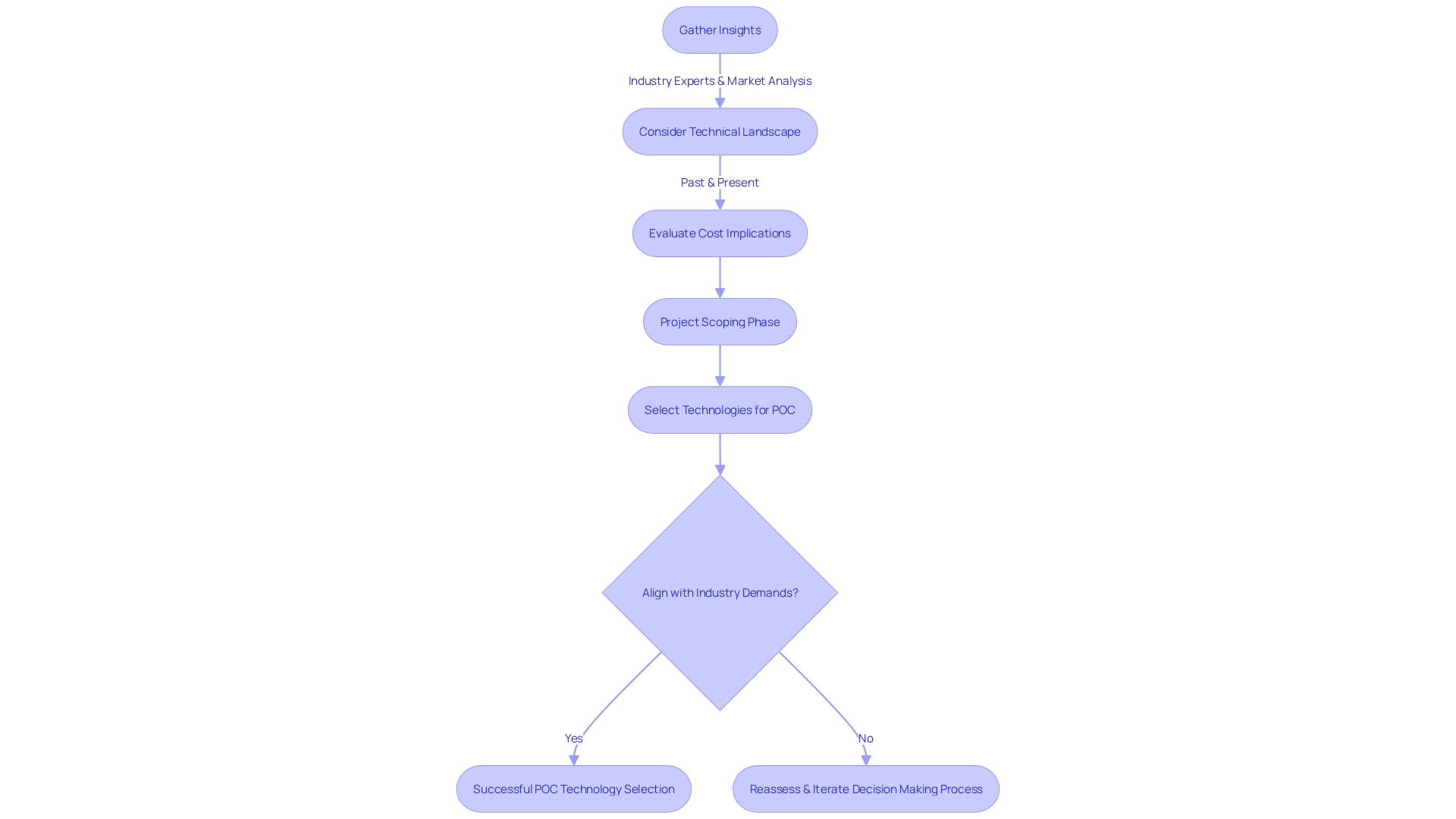
Setting a Realistic Scope
To ensure a Proof of Concept (PoC) serves its purpose effectively, it's crucial to delineate a clear and realistic scope. Concentrate on the core features and functionalities that are critical to demonstrate the concept's feasibility.
This targeted approach facilitates judicious use of resources and sidesteps the pitfalls of over complicated projects that can derail progress. By focusing on the primary technical aspects, you answer the pivotal question, 'Can it be done?'
without getting entangled in the nuances of business value or ROI at this preliminary stage. It's a strategic move to verify the potential of innovative technologies like those seen in the burgeoning field of computer vision, where the capabilities often surpass expectations. A PoC is not just a technical validation but also a groundwork to build a supportive community and robust documentation, contributing to the success of the concept in real-world applications. Remember, the goal is to generate robust data that could inform further development, not to get lost in a labyrinth of unstructured experimentation.
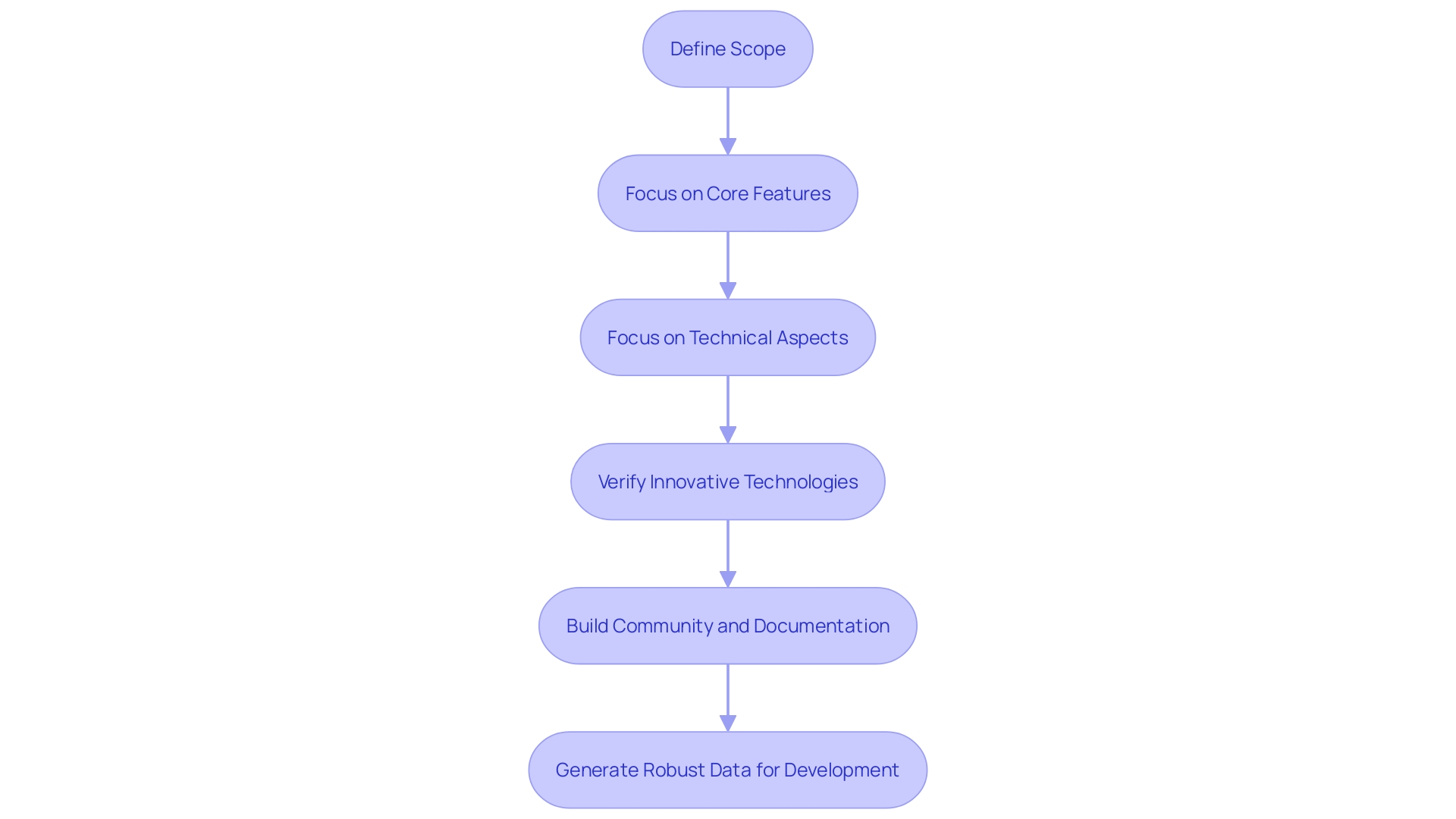
Developing an Effective Proof of Concept Process
Embarking on the journey of Proof of Concept (PoC) in the realm of medical device development or IT projects, such as IoT home automation, requires a strategic approach. Begin by pinpointing the precise objective of your Phase One: whether it's achieving commercial success, creating a clinical device, or securing the next round of funding.
This clarity is paramount as it guides the expansion of efforts and resources, which are significantly higher than in the initial Product Definition phase. With the smart home automation market expected to hit $40 billion, the stakes are high, and a PoC can serve as a vital tool in navigating this burgeoning sector.
Establishing well-defined success criteria is crucial; for instance, in a cybersecurity pentest, you might aim to uncover all vulnerabilities, particularly those of Critical and High severity. Sharing these criteria with your vendor ensures alignment towards your goals. As PoCs are instrumental in risk mitigation, they provide a sandbox to unearth potential issues early on, allowing for a cost-efficient, informed approach to innovation, as opposed to diving into full-scale development. Remember, a well-executed PoC aligns with strategic objectives and offers a glimpse into the project's future viability, setting the stage for informed decision-making and successful implementation.
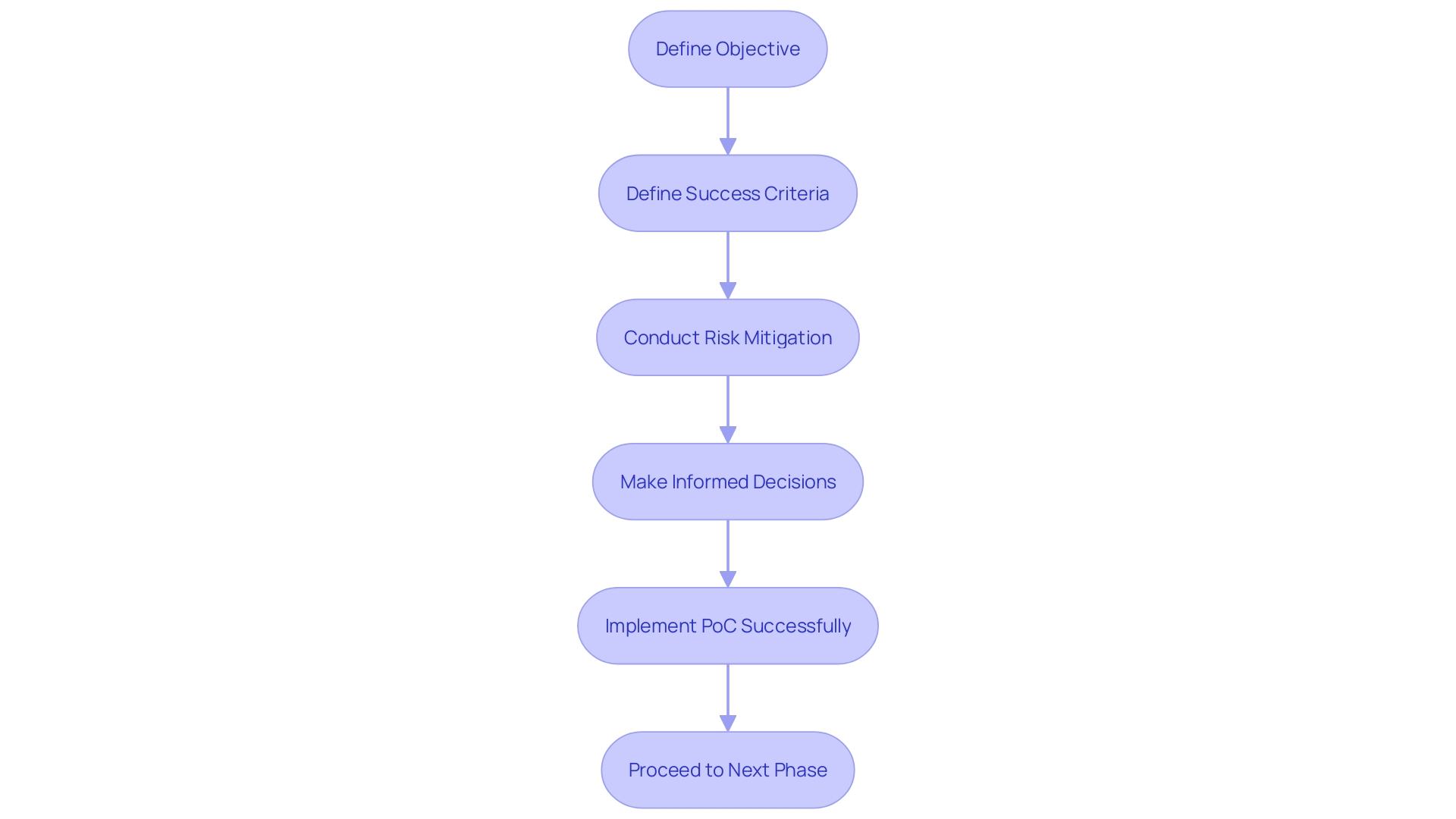
Step 1: Define the Problem Statement
When embarking on a Proof of Concept (POC), it is critical to start with a clear and comprehensive understanding of the business challenge you're addressing. The POC should be rooted in a well-defined problem statement, which acts as a compass throughout the development process. For instance, consider the Sales Director of an e-commerce company aiming to boost revenue from existing customers.
To create a POC that is both relevant and targeted, one must delve into the specifics: Why focus on existing customers rather than attracting new ones? What factors have triggered this initiative? Is there urgency due to market trends or internal goals?
Understanding the current cross-sell practices, average spend, and purchase frequency of customers can illuminate the path forward. The TOSCA framework can be a useful tool in this process, which stands for Trouble, Owner, Success, Constraints, and Actors. It emphasizes starting with the 'Trouble' by asking probing questions about the underlying issue, its urgency, and any timelines that may affect the POC's trajectory.
Incorporating insights from various sources is also crucial. Information can be gathered from industry reports, similar projects, and key stakeholders who will influence the project's outcome. These stakeholders are the ones who can make or break the success of the POC, and their insights are invaluable.
Statistics further underscore the importance of a POC; with the global market for smart home automation projected to reach $40 billion by 2020, it's clear that new concepts must be tested for viability in a rapidly evolving marketplace. A POC allows for this exploration in a controlled, cost-effective manner, mitigating risk by revealing potential issues early in the development process. Ultimately, a POC is not just about asking, 'Can it be done?'
but also 'Should it be done?' and 'How will it provide value?' By thoroughly addressing these questions, your POC will be set up for success, ensuring that the solution aligns with strategic objectives and delivers tangible benefits.
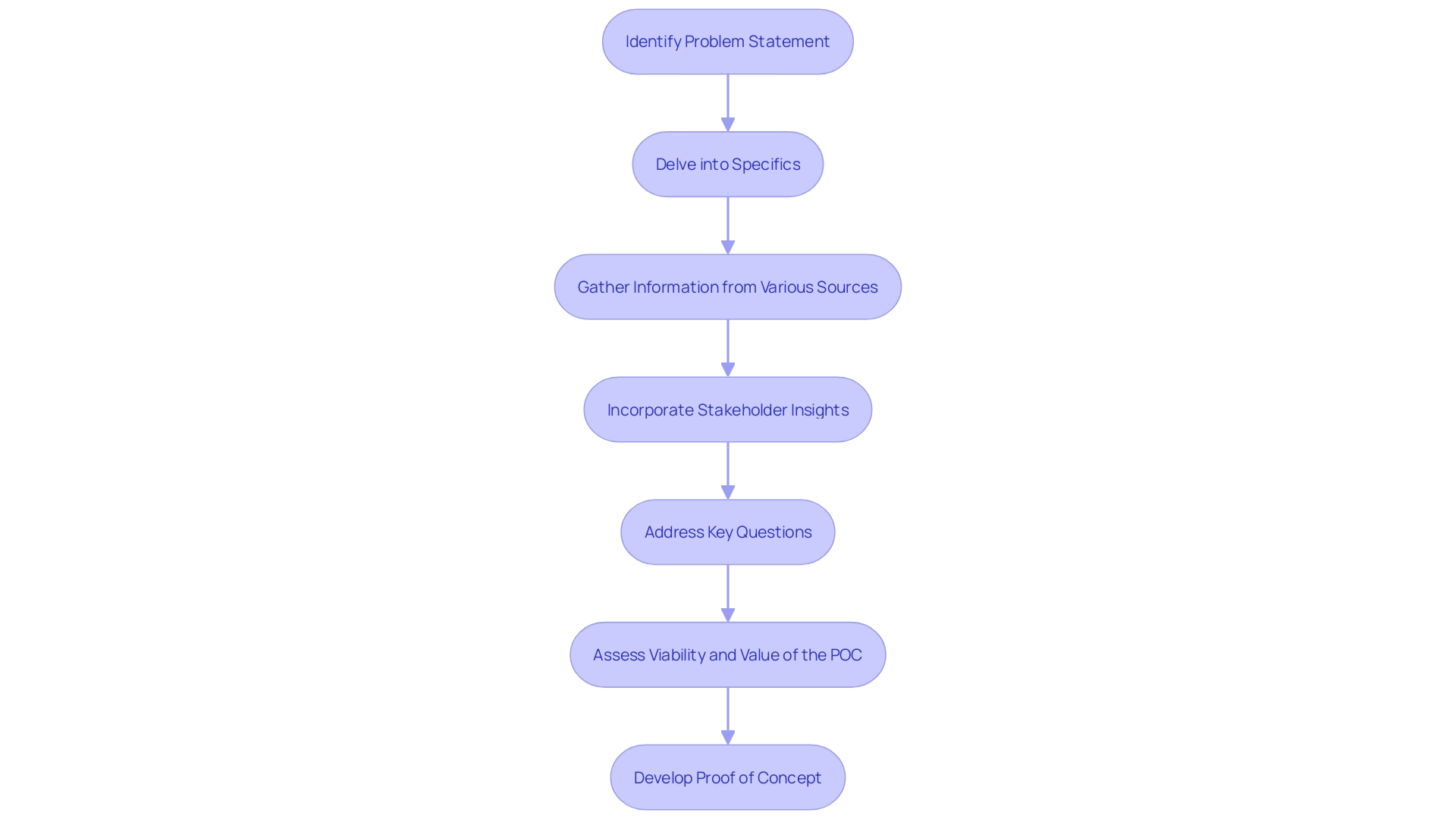
Step 2: Identify the Target Audience
When crafting a Proof of Concept (POC), it's vital to pinpoint and comprehend your target demographic's specific needs, challenges, and preferences. This insight fine-tunes the POC, ensuring it aligns with the users it's intended for. Take the New York City public libraries as an example: they serve nearly 40 million visitors annually across various neighborhoods, with each branch catering to the unique community it's situated in.
Similarly, understanding different developer personas—constructed from thorough research and real developer feedback—enables the creation of software that truly resonates with its audience. A POC isn't just a technical exercise; it's a strategic approach to validate a concept's practicality. By recognizing the progress and community in fields like computer vision, we can better anticipate the needs and objectives of new developers entering the space.
This is echoed in Apple's marketing philosophy of empathy, focus, and impute, which emphasizes the importance of deeply understanding the customer. Moreover, stakeholder analysis is crucial as it identifies and prioritizes those affected by a project, further guiding a POC towards success. The IT industry's trends reveal a growing democratization of development, with a diverse range of professionals contributing to the field.
Acknowledging these insights is essential for a POC that not only asks 'Can it be done?' but also 'Who are we doing it for?' and 'How will it impact them?'
Step 3: Design and Implement the POC
When crafting a Proof of Concept (POC), it's essential to concentrate on the essential functionalities that will demonstrate the viability of your idea. Utilizing use cases, as advocated by Alistair Cockburn, can be instrumental in understanding user requirements and guiding the development process.
By concentrating on key technical aspects, the POC should provide clear evidence that the concept can function as intended, without necessarily proving business value or ROI at this stage. The scope of the POC should be contained and focused, allowing for a thorough yet efficient exploration of the technology's potential.
According to recent insights, the global market for smart home automation is expected to reach $40 billion, underscoring the importance of POCs in validating the feasibility of innovative solutions in such burgeoning sectors. Moreover, a well-defined POC enables businesses to mitigate risks and reduce costs by identifying potential challenges early on. This controlled experimentation is crucial for ensuring that the solution aligns with strategic objectives before committing to a full-scale implementation.
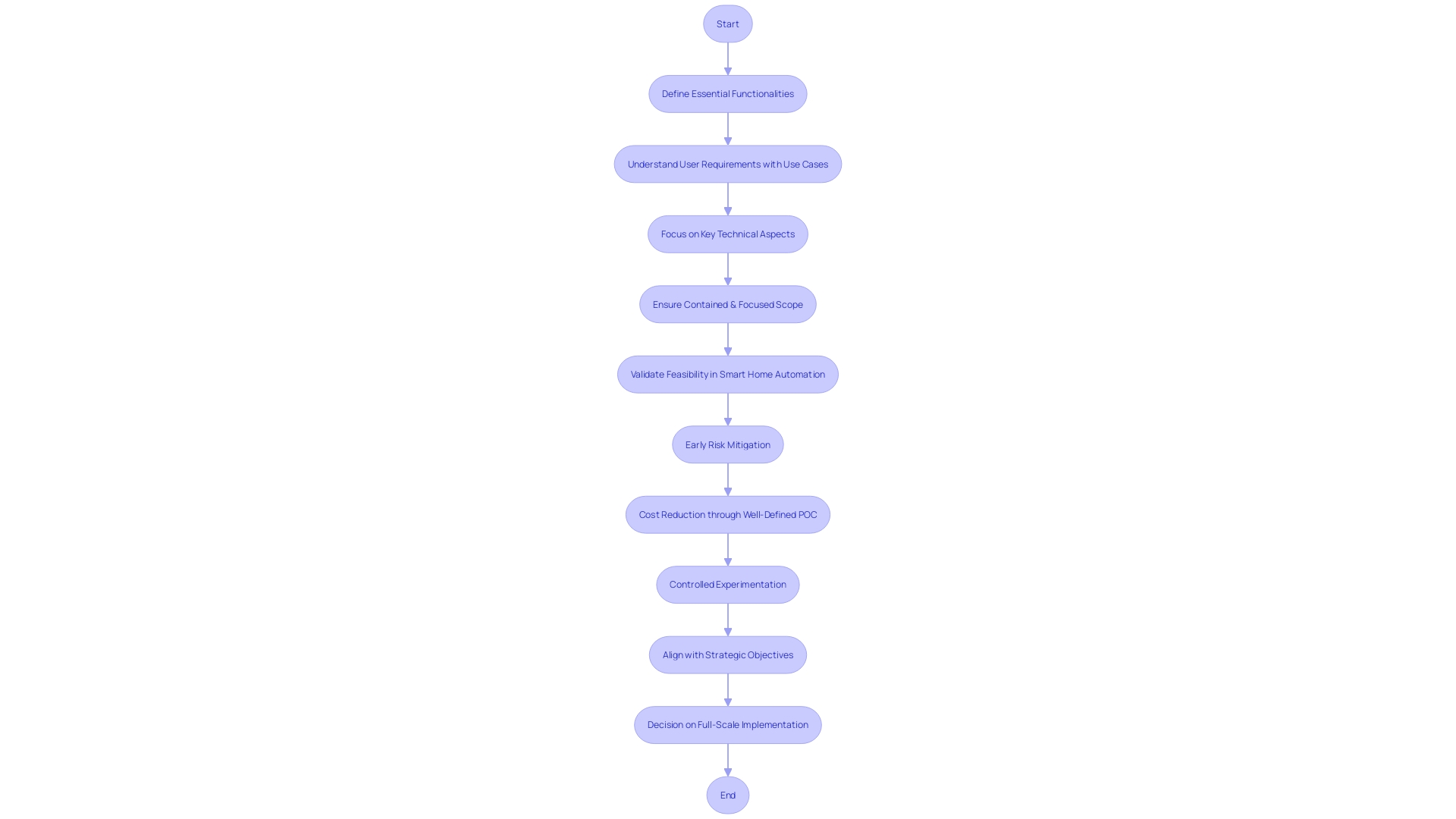
Step 4: Test and Evaluate
In the process of validating a Proof of Concept (POC), it's crucial to employ a meticulous testing strategy to ensure both its technical feasibility and functionality. This involves leveraging automated testing methods such as unit tests, which scrutinize the smallest components of the code for correctness, and broader integration tests that evaluate how these units work together.
As Alistair Cockburn highlighted through the use of use cases, understanding user requirements is foundational. By incorporating these cases into the testing phase, we gain insights into how well the POC serves its intended purpose and meets user needs.
Feedback from users and stakeholders is invaluable; it's an opportunity to measure the POC's effectiveness against the problem it aims to solve. Statistics from HCI research underscore the importance of user experience, with established questionnaires and rating scales helping to quantify this feedback. Moreover, the rise of technologies like IoT, projected to reach a $40 billion market value, demonstrates the growing significance of validating new technological solutions before wide-scale implementation. A POC is not just a technical exercise; it's a strategic step that allows for the identification of potential issues early on, saving time and resources in the long run.
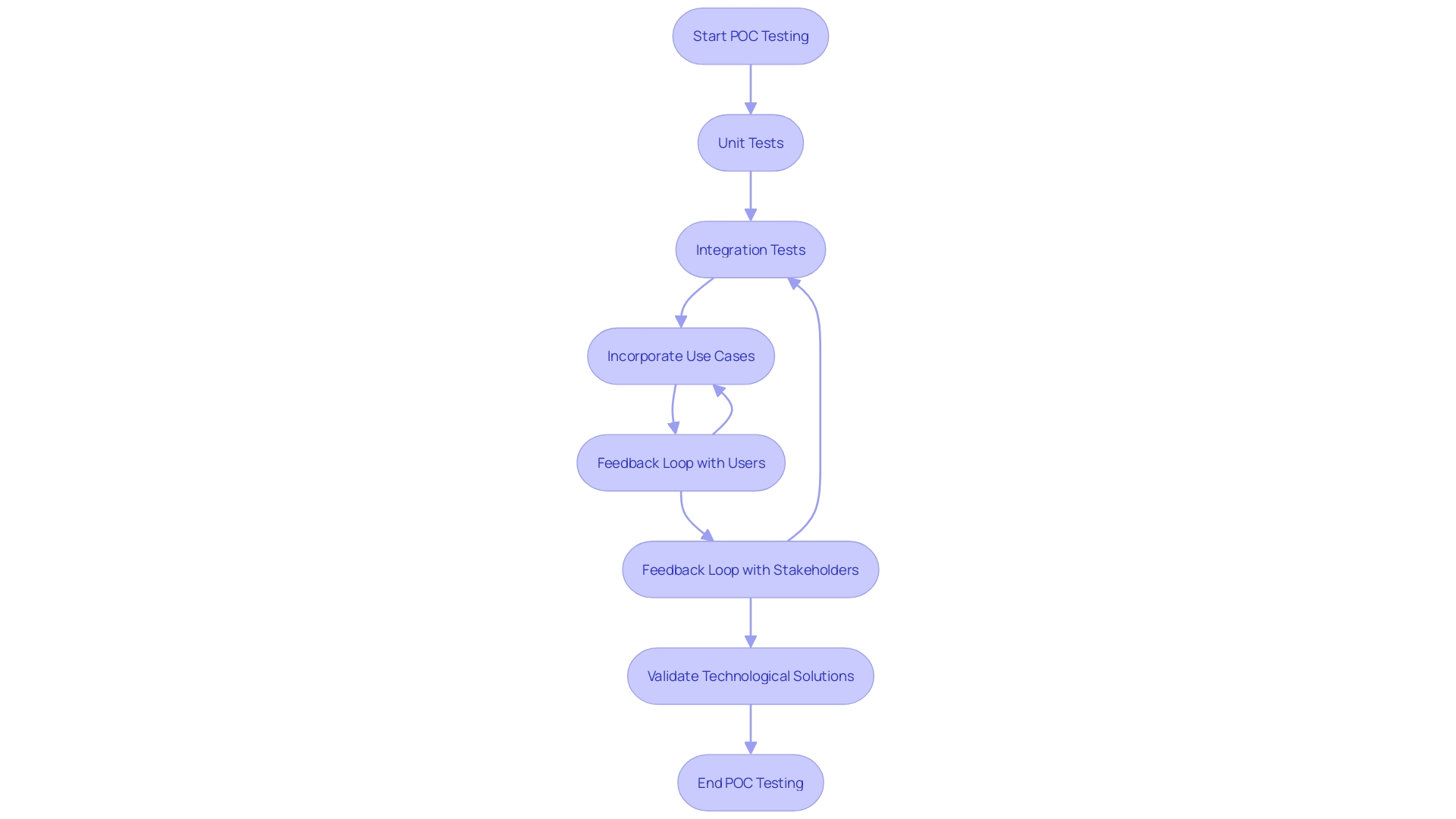
Step 5: Analyze and Iterate
To maximize the potential of a Proof of Concept (PoC), it's crucial to engage in a meticulous analysis of the results and feedback obtained from the testing phase. This involves a deep dive into the performance of the PoC, pinpointing specific areas that may require refinement or enhancement. By adopting a rigorous iterative approach, you not only fine-tune the concept but also significantly bolster its likelihood of success when deployed at full scale.
In the realm of software development, Jared Spool eloquently compares the PoC process to an architect crafting a scale model before constructing a grand building. This model serves as a visual and interactive representation, providing invaluable insights into the complexities of the project, much like a software prototype does for developers and stakeholders. It's a strategic step that ensures a clear and convincing presentation of the concept, paving the way for a smoother transition to the final product.
The significance of PoCs is underscored by their technical focus, as they are primarily designed to answer the pivotal question, 'Can it be done?' This is especially true in emerging fields such as computer vision, where underestimating the advancements and community support can lead to misaligned expectations. By leveraging Pics, organizations can navigate the intricate landscape of new technologies with greater confidence and precision, ensuring that their strategic goals are attainable and align with their vision for innovation.
Statistics further highlight the importance of PoCs in today's tech-driven world. With the smart home automation market projected to reach $40 billion by 2020, the role of PoCs in facilitating the integration of Internet of Things (IoT) devices into everyday life cannot be overstated. They serve as a vital tool for risk mitigation and cost efficiency, allowing businesses to explore the viability of concepts before committing to large-scale investments.
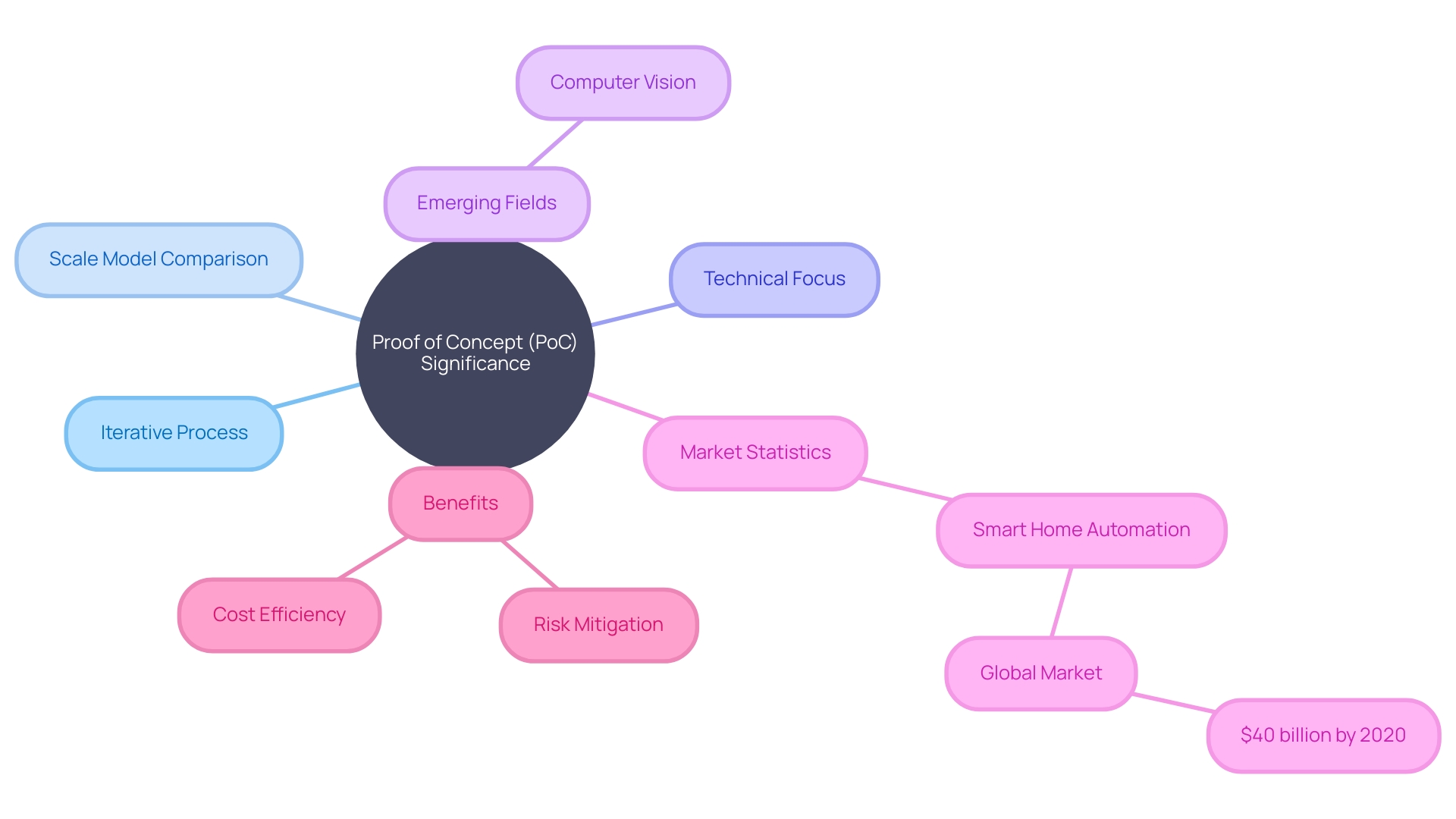
Presenting a Proof of Concept to Your Project Management Team
When preparing a Proof of Concept (POC) for your project management team, start by thoroughly understanding and testing the product or solution. This hands-on approach allows you to capture the process step-by-step, identifying any potential challenges and accurately defining the target audience.
For instance, in the case of a cybersecurity firm like Dectar, the distinction between internal troubleshooting and customer-facing documentation was vital, leading to more structured and effective communication. Highlight the current situation with precise metrics and data to establish a baseline.
For instance, if a monolithic application has been supporting user growth of 300%, this fact should be the starting point of your presentation. Then, pinpoint the main concerns arising from the existing conditions and formulate a hypothesis that addresses these issues.
This will underscore the urgency of the problem and demonstrate your grasp of the matter. Remember, a POC is not just a demonstration of feasibility but also a proposal for potential improvements or partnerships.
It should clearly outline the scope of work, timelines, staffing, budget, and more. This clarity will help decision-makers understand the benefits and select the best course of action.
Furthermore, it's essential to gather information from stakeholders and subject matter experts (SMEs) to fill any knowledge gaps. Summarizing all shared information and presenting it alongside a list of critical questions can illuminate areas that require further exploration. Supporting your POC with a well-defined vision and strategy is also crucial. As Yogi Berra's quote suggests, "If you don't know where you are going, you'll end up someplace else." This clarity of purpose ensures that your project roadmaps are intuitive and easily communicated without reliance on jargon. Lastly, consider the macro-environmental factors that could impact your project, such as data availability, skillset, timeframe, organizational readiness, and political environment. By aligning these elements, you enhance the likelihood of your project's success, bridging the gap between a mere display of data acumen and a truly impactful work.
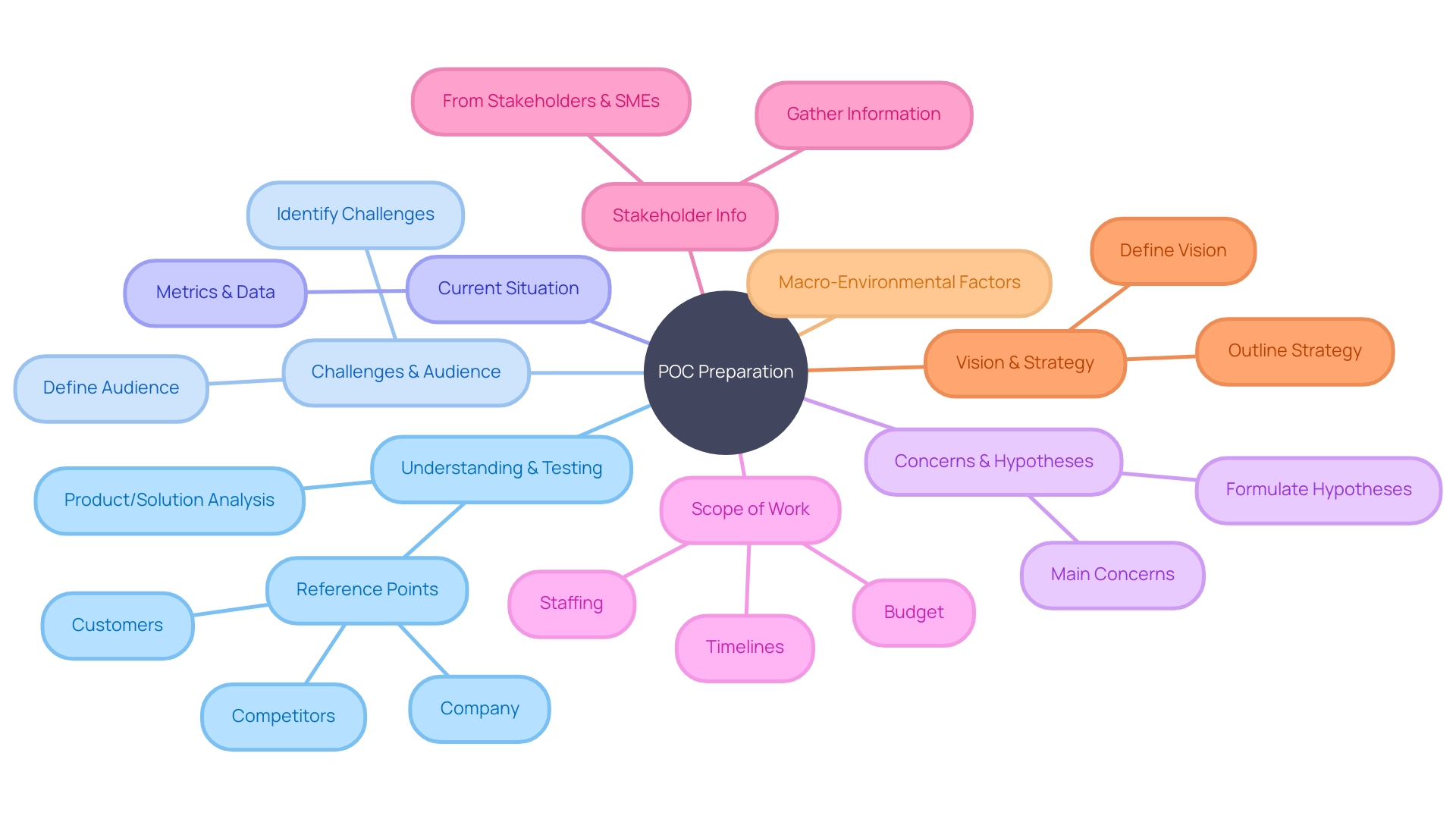
Prepare a Clear and Concise Presentation
Embarking on a Proof of Concept (POC) is a decisive step in validating an IT project's feasibility. To ensure stakeholders grasp the POC's value, begin with an engaging introduction that outlines the feature or solution being tested.
Here, connect the dots between the POC and its practical benefits, akin to how weather forecasts are tailored for different New York City neighborhoods to address their unique climatic diversity. Progress through the POC documentation with a logical flow, structuring content from foundational concepts to advanced ones.
Each section should build upon the last, avoiding any abrupt transitions that could confuse readers. As you address reader questions within the narrative, consider integrating simple use cases to illustrate your points clearly.
When presenting data, remember the distinction between visual and written reports. Opt for visuals—slides, charts, and graphs—to convey complex information swiftly and cogently.
These should be labeled clearly, supporting the central messages you aim to communicate. Keep in mind the accessibility of your presentation so that it's comprehensible to all audience members, regardless of their familiarity with the subject. Lastly, ensure that your POC presentation summarizes the project's specific aims and the rationale behind the chosen experimental approaches. Discuss the broader research question at hand, and explicitly state the relationship between the data, control measures, standard thresholds, and any statistical significance. This comprehensive approach will not only enhance the POC's clarity but also underscore its importance and relevance to the project's success.
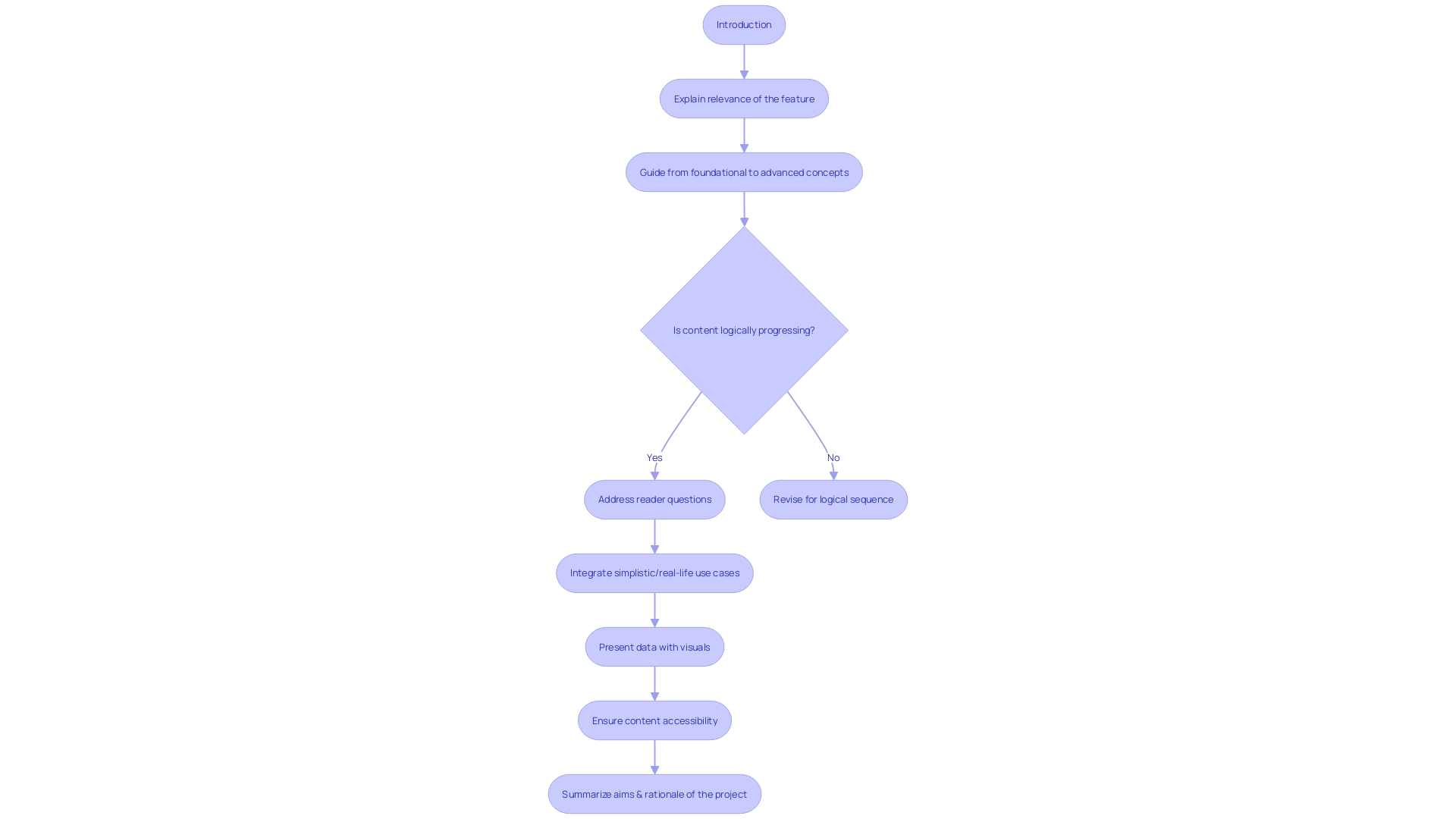
Address Potential Questions and Concerns
When embarking on a Proof of Concept (POC) for your business IT project, it is crucial to communicate effectively with your project management team. You'll need to clarify the technological needs of your project, the specific problems you're aiming to address, and how the proposed technology offers a solution.
Additionally, it is essential to demonstrate that the technology will integrate seamlessly with your business processes and that it has the potential to scale with your operations. To ensure that your team has full confidence in the POC, prepare to answer questions about time and budget constraints.
As noted by Brecht Carnewal, questions like "How do you address time and budget challenges?" are common and pivotal.
They are designed to evaluate your ability to manage these aspects within your project operations. It's important to have data at your fingertips to back up your strategy for navigating these challenges.
Moreover, be ready to discuss the physical and technical specifications of your project. This includes the volume of items to be digitized, their formats, and handling requirements to prevent damage during the process. Your team will appreciate a clear understanding of how the technology fits into the big picture, both in terms of operations and the physical handling of project materials. In preparation, create a list of anticipated questions and identify subject matter experts who can provide in-depth answers. This approach not only anticipates potential concerns but also showcases a comprehensive understanding of the project's scope and the technology's capabilities. Remember, a well-prepared POC presentation, grounded in data and clear hypotheses, can significantly increase the likelihood of gaining stakeholder support and ensuring the success of your IT initiative.
Highlight the Value and Potential Impact
Highlighting the importance of a Proof of Concept (PoC) is essential when addressing specific business challenges or exploring new opportunities. A PoC not only demonstrates the practicality of a concept but also showcases its potential to revolutionize operations, as seen in the Vigicard project which utilizes blockchain technology.
This initiative, led by Anca Mirela Chiriac, underscores how a PoC can be instrumental in improving patient care by securely managing sensitive data and facilitating real-time information sharing among healthcare professionals. Similarly, Professor Olugbenga Akinade's work at Teesside University exemplifies the role of PoCs in shaping future digital trade models.
By leveraging local trade infrastructure and academic expertise, these projects aim to establish benchmarks for the UK's digital trade systems. The strategic implementation of Pics, as reflected in the increasing global market for smart home automation—expected to reach $40 billion—highlights the transformative impact of such preliminary experiments. PoCs offer a valuable opportunity for risk mitigation and cost efficiency, allowing businesses to navigate potential challenges and align new concepts with strategic goals before committing to full-scale development.
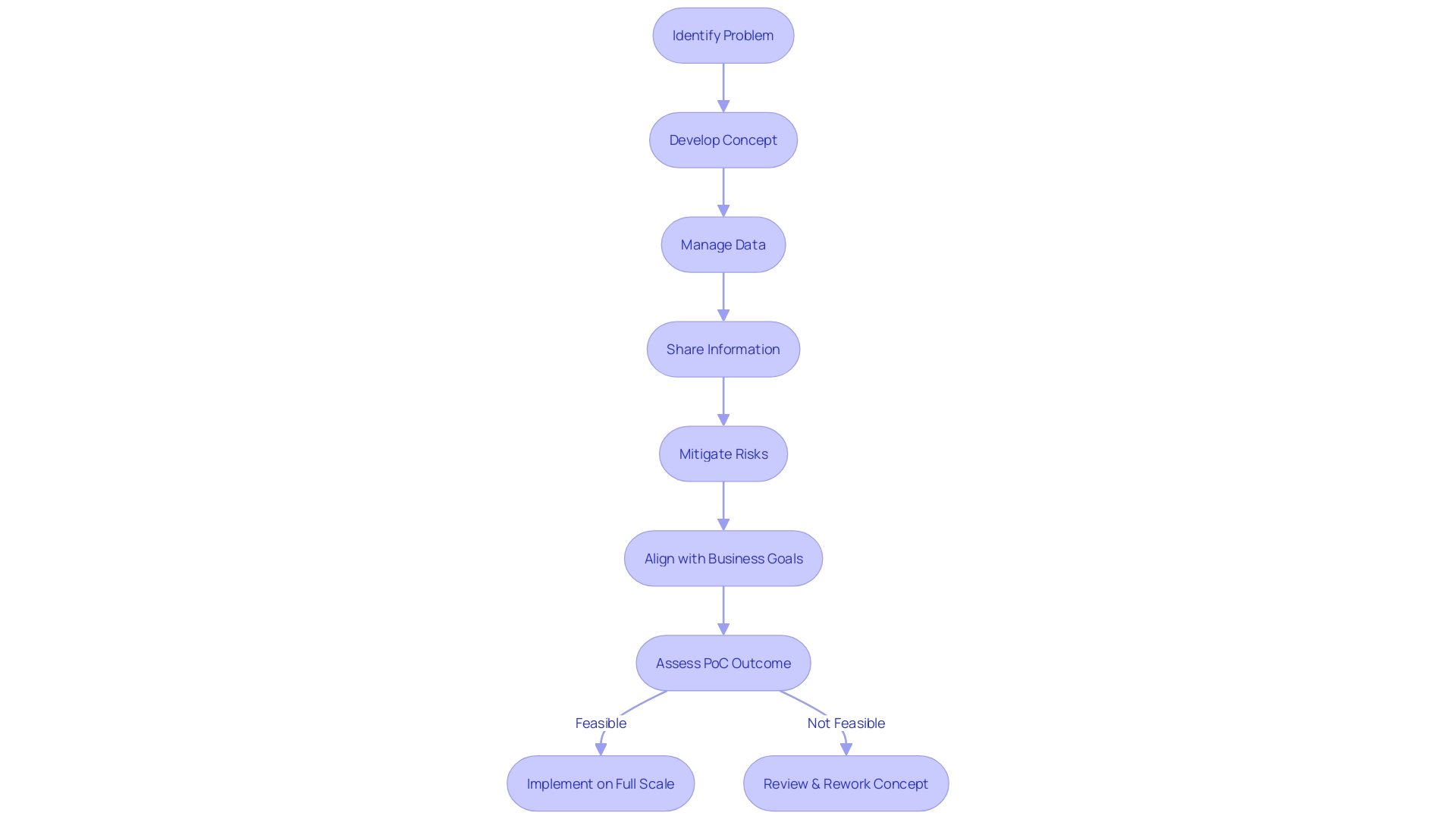
Ensuring Transparency and Collaboration in Your Proof of Concept
The cornerstone of a successful Proof of Concept (PoC) lies in the clarity of the problem you're aiming to solve and the collaboration between stakeholders. A PoC is not just a trial run; it's a strategic assessment that reveals whether an idea can be realized effectively and if it serves the broader goals of the business.
To begin, we must embrace problem discovery and definition. This involves understanding the issue at hand, the opportunities it presents, and the variety of solutions available.
Rapid, iterative activities with active stakeholder participation pave the way to navigate uncertainty effectively. As highlighted in 'Lean Enterprise,' a clear problem statement is crucial as it allows the team to concentrate on vital aspects while sidelining distractions.
This is even more critical for Machine Learning (ML) projects, where understanding the 'why' behind the need for an ML/AI solution is as important as the solution itself. Risk mitigation is another vital aspect of Pics.
By testing ideas in a controlled setting, potential challenges can be identified early on, enabling informed decision-making and reducing the risks linked with unproven concepts. Moreover, PoCs are a cost-efficient approach, preventing the hefty expenditures that come with full-scale implementations. Recent trends like home automation and the Internet of Things (IoT) serve as excellent examples. The smart home automation market is projected to reach $40 billion by 2020, showing the significance of PoCs in guiding these technologies to market readiness while addressing challenges. Similarly, Ethereum's thriving digital economy and its DeFi system illustrate the power of open, collaborative platforms in fostering innovation. In sum, the success of a PoC hinges on meticulous problem definition, stakeholder collaboration, and a strategic approach to risk and cost management.
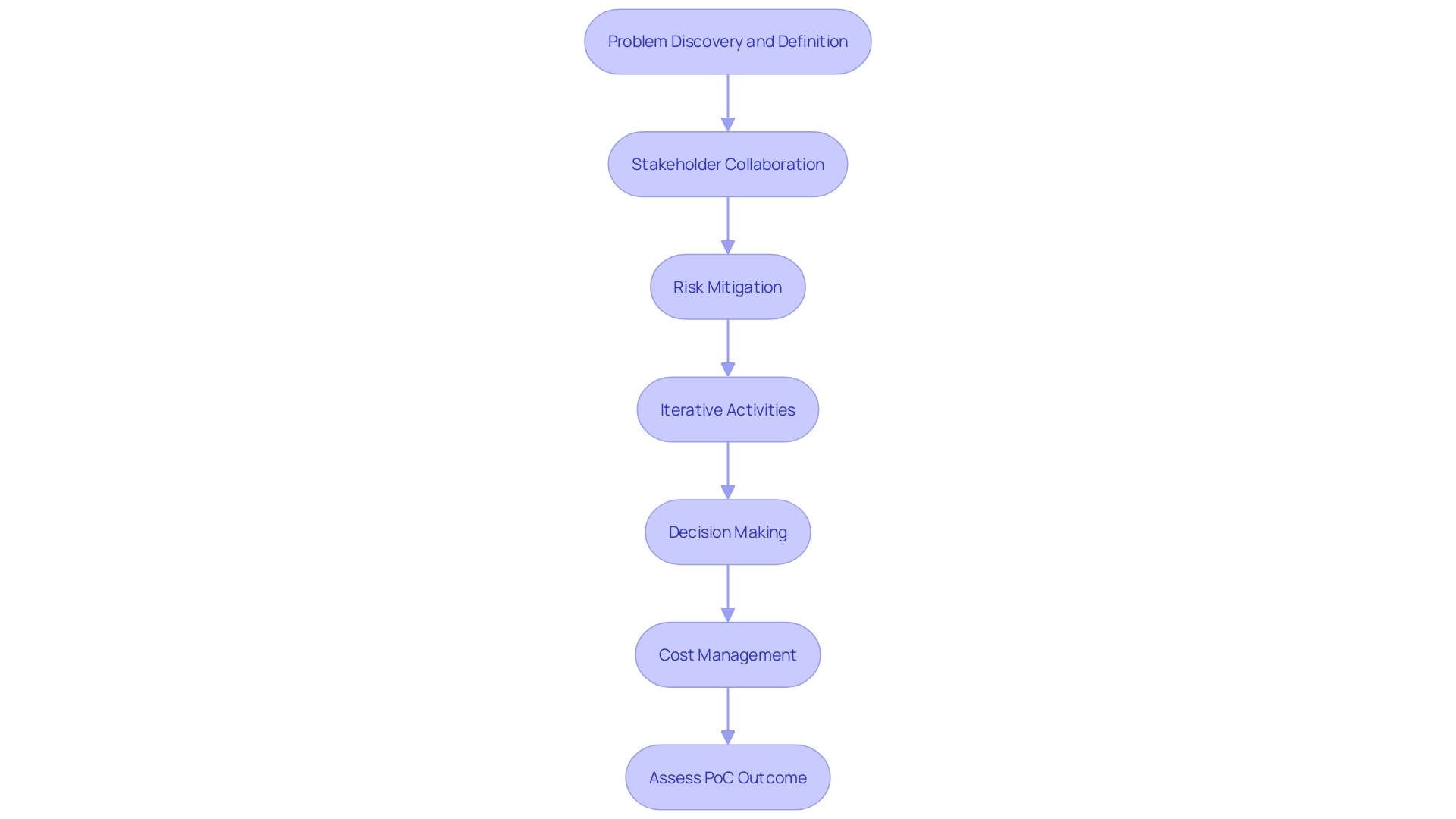
Regular Communication and Updates
Enhancing the clarity and cohesion of IT projects, especially during a Proof of Concept (POC), is paramount. A proactive approach involves summarizing all shared project details in a single document, offering a clearer direction for next steps.
If project conversations have been scattered across various meetings and teams, your stakeholders and Subject Matter Experts (SMEs) may not be fully aware of the unresolved aspects of the project. Collating the facts and sharing them with the partners can simplify the task of pinpointing critical project gaps.
Furthermore, assembling a list of pertinent questions and identifying the right experts to answer them can streamline the problem discovery phase. This phase is essential to understand the problem thoroughly and to focus on what is essential, ignoring distractions. Clear communication using a common language or team-specific vernacular ensures that everyone is on the same page, fostering an environment where challenges are not only identified swiftly but addressed efficiently, thus accelerating the journey to the right solution.
Collaborative Decision-making
To enhance the effectiveness of a Business IT Proof of Concept (POC), it's essential to incorporate a collaborative approach that mirrors the Agile software development model. By breaking down projects into manageable segments and involving stakeholders in iterative sprints, we can adapt to changes swiftly and ensure that the final product truly resonates with users' needs.
This method, which is the bedrock of Agile, has shown that welcoming stakeholder input, even in the later stages of a project, can be a linchpin for success. Incorporating feedback from diverse stakeholders not only aligns the POC with overarching business goals but also mitigates the risk of 'requirement-related' issues such as poorly defined or conflicting requirements—common pitfalls that can lead to unnecessary rework.
As emphasized by the Work Innovation Lab, distinguishing between mere coordination and genuine collaboration can be the difference between a perfunctory outcome and one that is innovative and impactful. Kinship care statistics further highlight the importance of involving those with a vested interest, as over 2.5 million children in the U.S. benefit from the care of relatives who are deeply invested in their well-being.
The wisdom gleaned from decades of IT implementations supports this collaborative ethos. Prioritizing the 'last mile' ensures that when technology reaches its end-users, the likelihood of a successful implementation is significantly higher. This is particularly critical in sectors like higher education, where diverse user needs must be met to achieve buy-in. By fostering partnerships and shared control with stakeholders, we can generate outcomes that are both meaningful and have a higher likelihood of acceptance and integration into daily use.
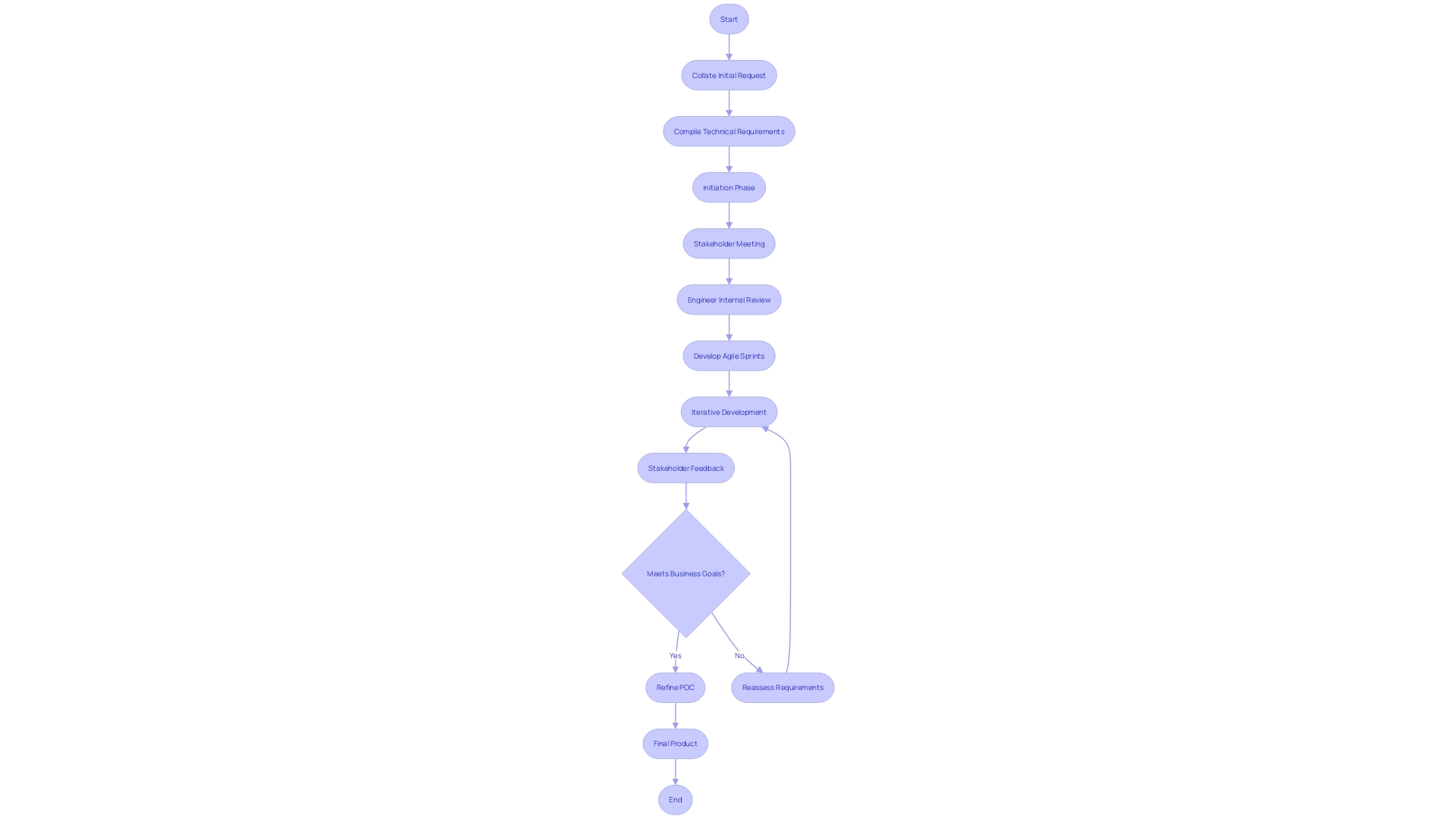
Documenting and Sharing Learnings
Compiling and disseminating the knowledge acquired from the proof of concept (POC) is a crucial step. By meticulously recording the outcomes and insights of the POC, organizations set a precedent that informs and streamlines future endeavors.
As demonstrated in the case of Wayfair, where machine learning algorithms were utilized to comprehend the descriptive attributes of a vast product catalog, the structured documentation of processes and product tags significantly enhanced the search experience for their customers. This practice of capturing and organizing information not only refines current projects but also provides a reference point that prevents the unnecessary duplication of effort and the recurrence of past errors.
Common Mistakes to Avoid in Your Proof of Concept
Proof of Concept (POC) is a critical step in the validation of new technologies, products, or solutions, particularly in the realm of IT where feasibility and functionality are paramount. The primary goal of a POC is to answer the pivotal question, "Can it be done? "—a question that is especially relevant for groundbreaking fields such as computer vision.
Doctor's case study illustrates the importance of thorough product testing and documentation as part of the POC process. By taking ownership of documentation, Dectar aimed to alleviate the workload on their Support Team and streamline their processes in multiple languages. This echoes the sentiment that POCs should not only focus on technical capabilities but also consider the end-users, who in Dectar's case were middle system administrators.
Meanwhile, statistics show the burgeoning potential of innovations like home automation, which is projected to reach a $40 billion market by 2020. This growth underscores the significance of conducting POCs to mitigate risks and ensure cost efficiency before full-scale implementation. Newcomers in fields like computer vision often underestimate the progress made, but through POCs and the support of communities like Roboflow, they can better understand the capabilities and documentation necessary to realize their projects successfully.
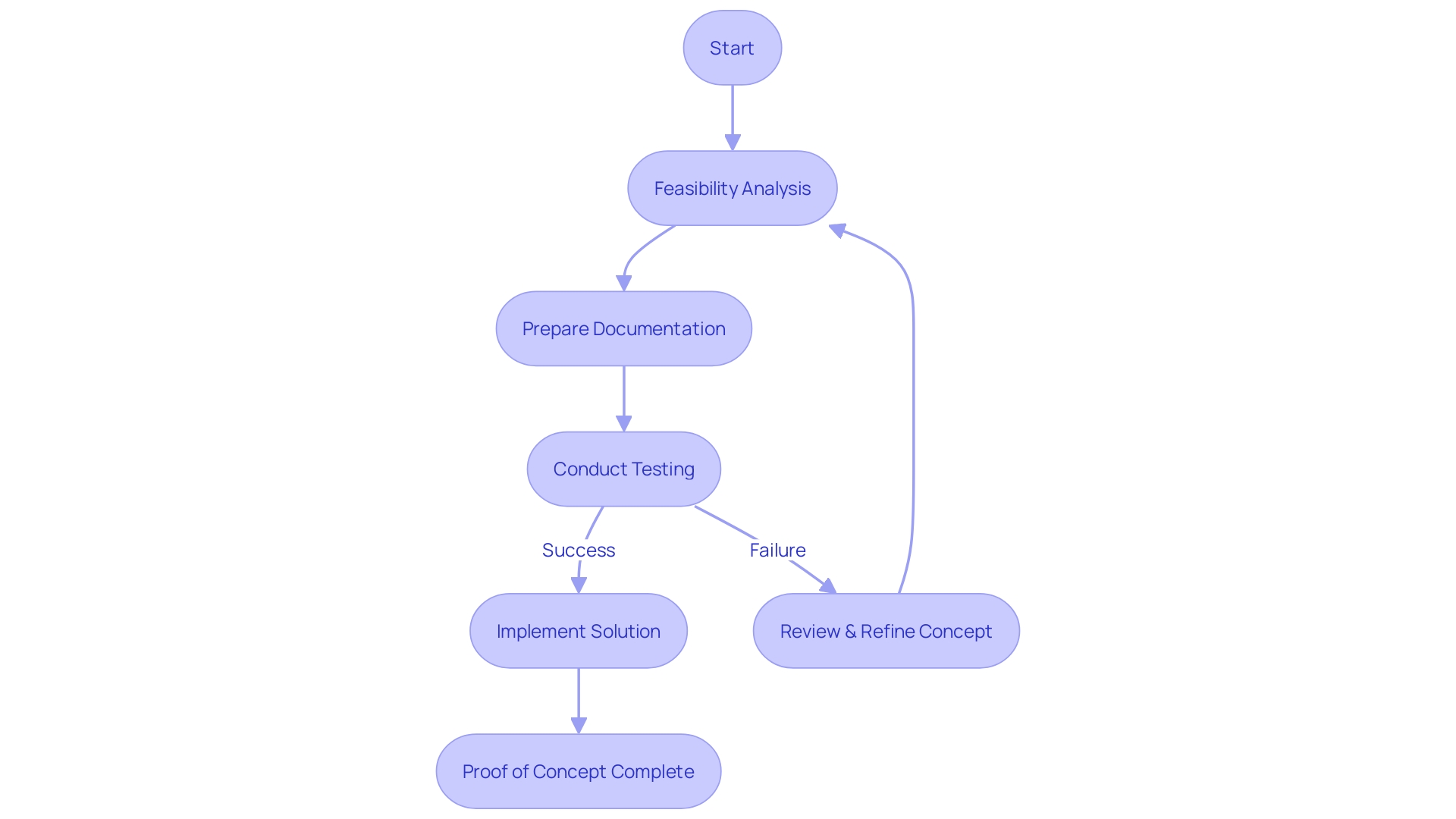
Insufficient Planning and Preparation
The journey from concept to realization in business IT projects is critical, and the Proof of Concept (POC) serves as the bridge that ensures safe passage. A POC, at its core, is a small-scale, practical test to determine if an idea can be turned into reality.
It's about asking the essential question, "Can it be done?" and getting a conclusive answer before committing significant resources.
For instance, in the dynamic sector of computer vision, Roboflow has helped demystify the progress in the field by providing a platform for developers to test and validate their innovative ideas. This approach is akin to an architect creating a scale model before construction begins, as Jared Spool eloquently points out.
It's not the final edifice but a crucial step in visualizing and refining the project. To ensure a POC's success, it's essential to define clear objectives and select appropriate technologies and metrics.
A poorly planned POC can lead to suboptimal results, much like a building constructed without a blueprint. The POC process should also respect the time and effort involved, akin to Health Impact Assessments (HIAs), which, while adding time to planning, provide valuable insights for all, especially marginalized communities. In the realm of data projects, elements like Data Availability, Skillset, Timeframe, Organizational Readiness, and Political Environment must align perfectly, like tuning an engine, to avoid a bumpy road ahead. Remember, many impressive projects fail to transition from theory to practice, often becoming mere displays of data acumen. To bridge this gap, a well-executed POC is indispensable, ensuring that quality work translates into impactful, real-world applications.
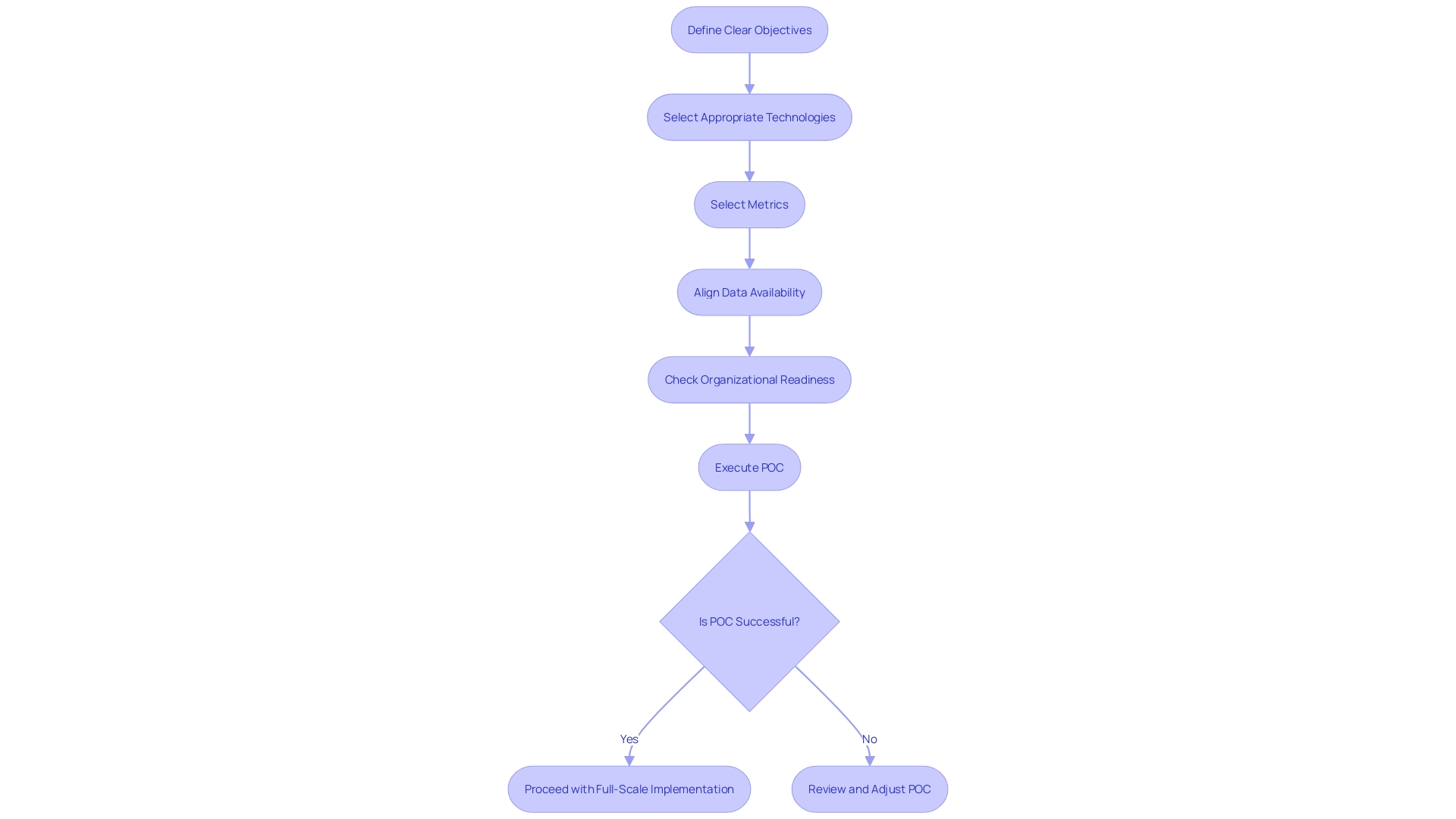
Lack of User Involvement
Incorporating user feedback during the proof of concept (POC) phase is essential for aligning the final product with user needs and expectations. A recent surge in the demand for user research, as highlighted by 62% of respondents in the Future of User Research survey, underscores the growing importance of user involvement. This trend is driven by a need for risk mitigation and strategic clarity in a competitive and uncertain market, as noted by Emma Craig from Miro.
A case in point is our experience with AI-assisted development, where engineers, already using the technology for personal projects, provided early insights that shaped the evaluation process. This underscores the importance of engaging with actual users from the outset to ensure the POC addresses real-world concerns and delivers tangible benefits. As we've seen, Pics are more than technical feasibility studies; they're a platform for learning and adapting to user feedback, ensuring that the end result is not only viable but also valuable to those it's intended for.
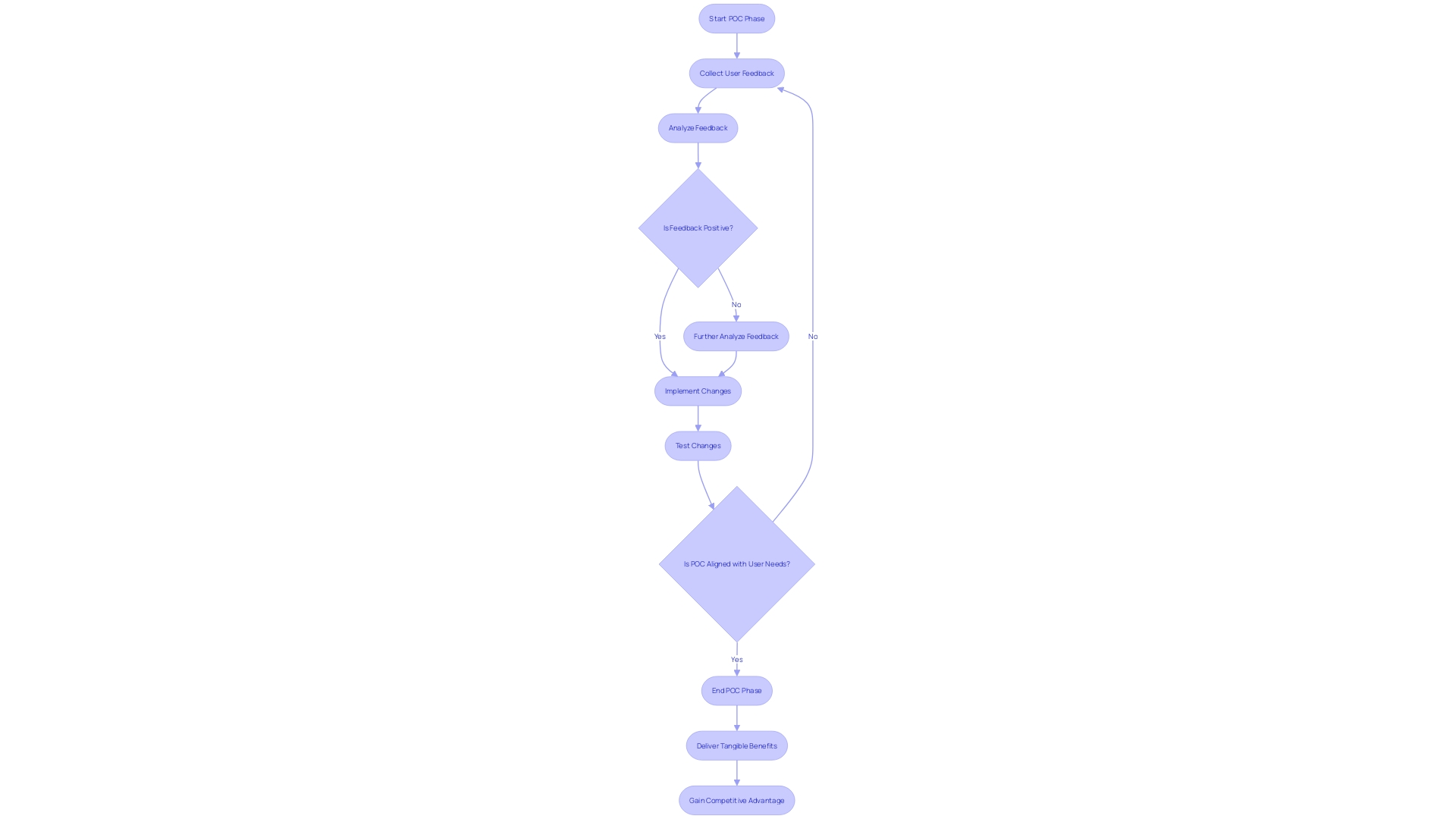
Ignoring Feedback and Learnings
A Proof of Concept (POC) serves as a small-scale experiment to validate the feasibility of an idea, much like an architect's scale model before constructing a grand building. It tests whether a technology or solution can perform as expected in the early stages. While the technical aspects are crucial, the POC is not the final product; it's an opportunity to iterate based on feedback.
Curriculum Associates, presenting at the CSUN conference, highlighted the value of incorporating customer feedback into their accessibility roadmap, emphasizing the importance of user experience to drive enhancements. Similarly, in health research, coproduction involving diverse stakeholders, including those with lived experience, has shown to improve health outcomes. By embracing feedback, especially from end-users who often have the least opportunity to voice their concerns, organizations can refine their POCs, ensuring they address real-world issues and increase the likelihood of successful implementation.
Best Practices for a Successful Proof of Concept
Embarking on a Proof of Concept (POC) is a strategic step in validating the practicality and functionality of a new technology or solution. By focusing on the pivotal technical aspects, a POC should address the fundamental question: 'Can it be done?' It's vital to not only demonstrate the feasibility but also to consider the alignment with strategic objectives.
As Mike Kasparian, a seasoned leader in leveraging technology for business value, points out, the essence of a POC is not to get entangled in proving business value or ROI at the outset, but rather to establish the grounds for technical success. Furthermore, a well-conceived POC can significantly reduce risks and enhance cost efficiency. It's a controlled experiment that identifies potential challenges and informs decision-making, circumventing the stumbling blocks that might arise in a full-scale deployment.
This approach is particularly critical in sectors like medical device development, where the clarity and focus of objectives in early phases can dictate the trajectory of product success. As the smart home automation market, projected to hit $40 billion, has shown, innovation starts with a POC that validates the viability of cutting-edge concepts. Thus, the key to a successful POC lies in its ability to provide a comprehensive yet targeted evaluation that guides the journey from concept to market triumph.
Thoroughly Define Objectives and Success Criteria
A Proof of Concept (POC) is a crucial step in the development process, acting as a small-scale experiment to validate the feasibility of a concept or idea. It's an essential tool used to determine whether a technology, product, or solution can perform as expected, focusing primarily on the technical aspects rather than the potential business value or ROI.
The main goal of a POC is to resolve the question 'Can it be done?' This investigative approach should include a detailed procedure for data collection to provide evidence of a concept's viability, paying attention to the accuracy, precision, and any limitations of the data.
By doing so, you can refine the POC design to ensure that it stays on track and aligns with the overarching objectives. For example, Toyota's Woven Planet initiative, despite its broad vision, struggled due to a lack of clear, concrete goals and an underestimation of the complexity involved in creating a versatile software ecosystem for various vehicle types. The challenge lies in maintaining a disciplined focus throughout the POC process, using structured scientific practices to examine patterns and relationships that reveal the strengths and weaknesses of the concept being tested. It's not just about asking if something can be done, but also carefully documenting and understanding the journey to that answer.
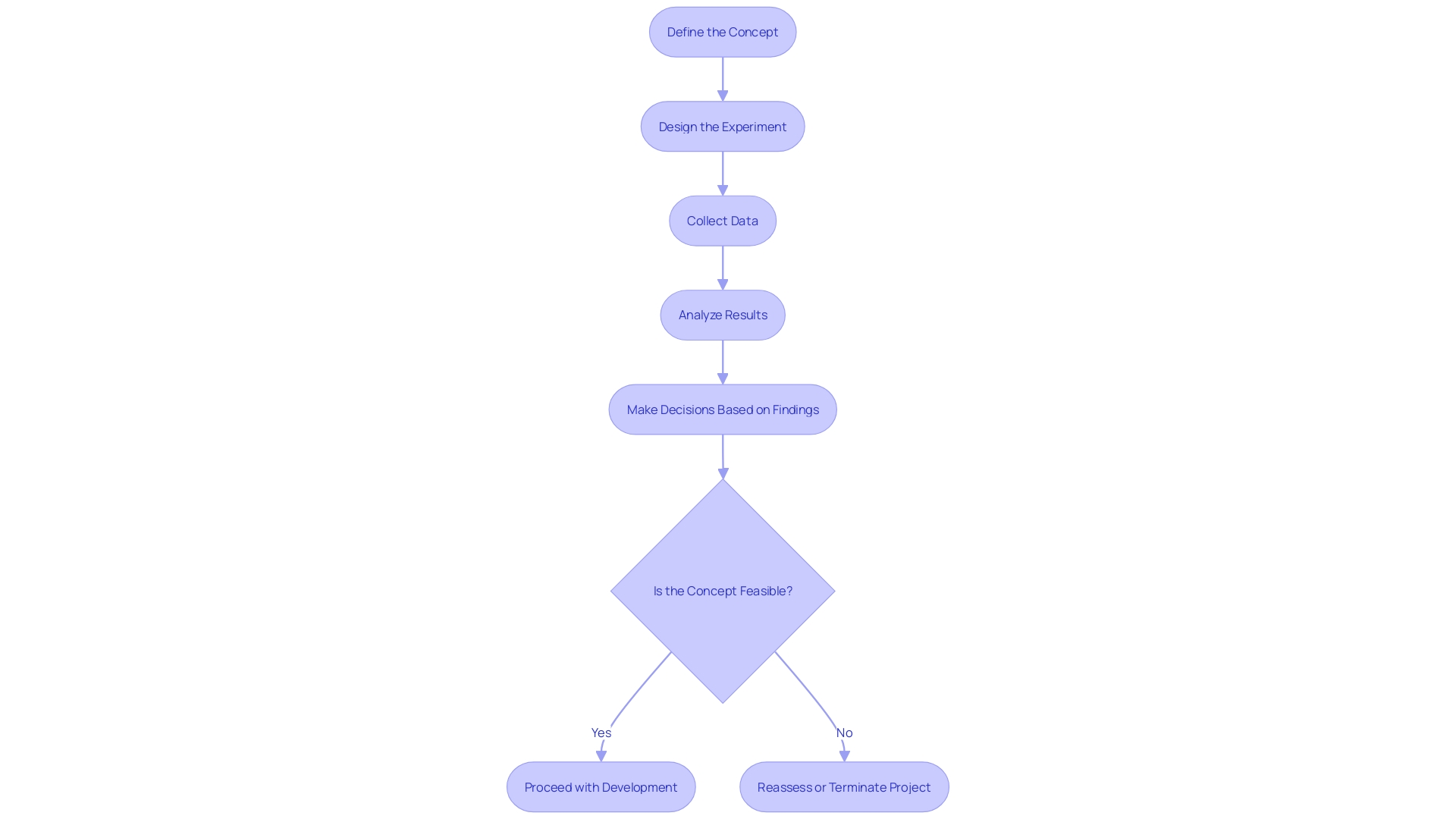
Involve Users Throughout the Process
Integrating user involvement from the initial stages of a Proof of Concept (POC) is critical for its evolution and enhancement. As we navigated the process of implementing AI-assisted development, we recognized the significance of incorporating feedback from those who were already experimenting with Large Language Models (LLMs) for personal use.
Their enthusiasm and insights proved invaluable for refining the concept and ensuring its alignment with practical needs. As Jared Spool eloquently puts it, creating a software prototype is akin to an architect's scale model, offering a preliminary visualization and understanding of the final product.
This approach not only facilitates a clearer comprehension of the software's functionality but also garners early buy-in from users, whose firsthand experience can guide the development towards success. A POC, after all, seeks to answer the critical question of 'Can it be done?' and user feedback is the cornerstone of answering this question effectively, ensuring that we build upon a foundation that meets both technical feasibility and user expectations.
Leverage Agile Methodologies
Embracing Agile methodologies like Scrum and Kanban is crucial for today's iterative software development landscape. Agile's essence lies in its ability to break down extensive projects into smaller, more manageable segments, allowing teams to complete work in defined 'sprints.'
This approach is not only about speed but also about adaptability and collaboration, bringing developers and stakeholders together to reassess goals and progress on a daily basis. Despite challenges such as developer burnout and the shifting tech environment, Agile remains a robust framework for fostering rapid iterations and embracing changes, even late in the development cycle.
A study highlighting the effectiveness of Agile points out that 'working software is the primary measure of progress,' underscoring the methodology's focus on tangible results over rigid planning. Moreover, the iterative nature of Agile allows for consistent feedback and the opportunity to refine and redirect efforts as needed. This is in direct contrast to traditional 'waterfall' methods, which often lead to protracted development times and inflexible structures. The Agile mindset, rooted in principles that value individual contribution and customer collaboration, is more than a process; it's a transformative approach to creating and delivering software that aligns with the dynamic demands of the modern digital landscape.
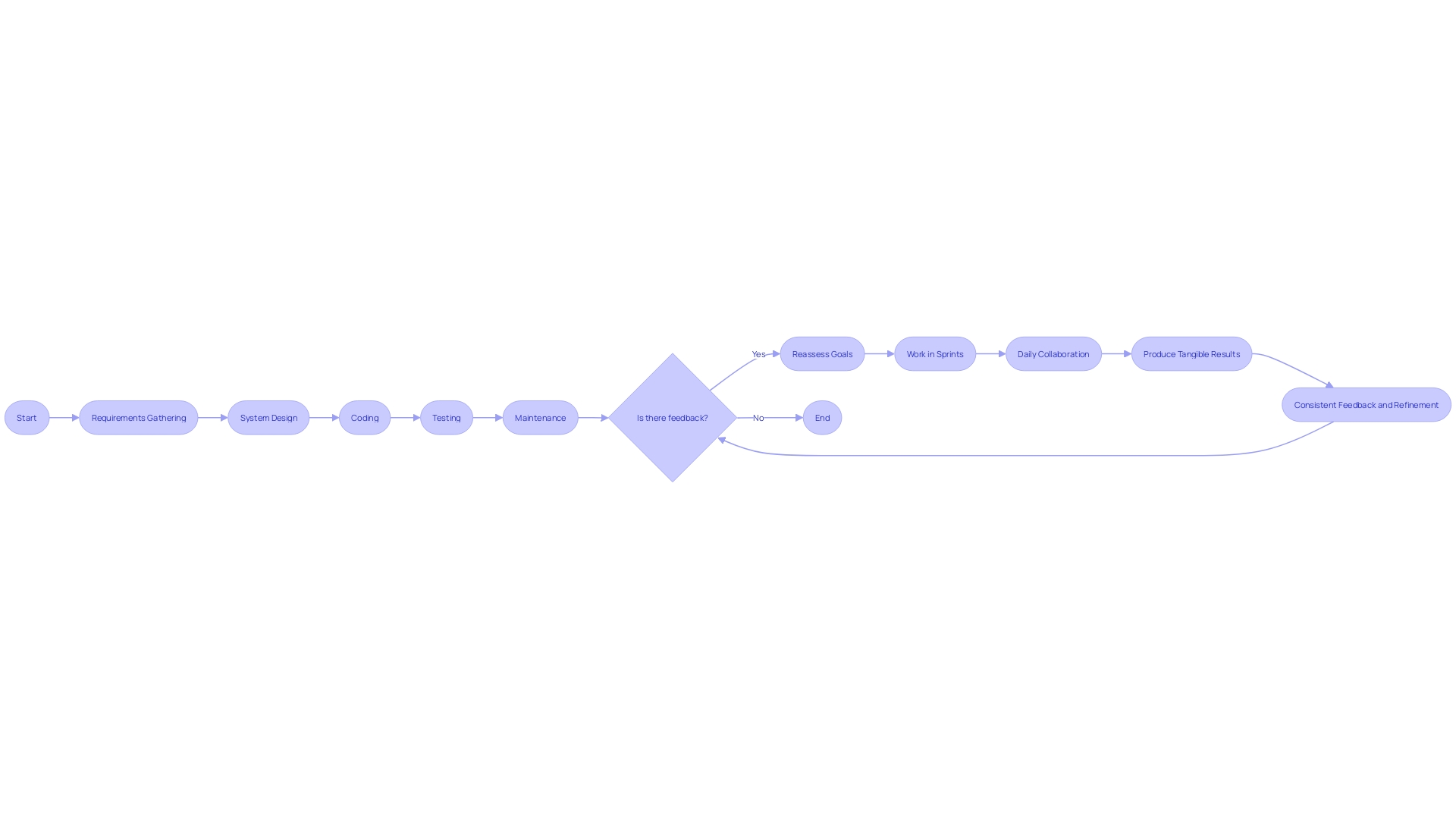
Continuously Learn and Iterate
In the realm of business IT, where the landscape is perpetually shifting, the concept of 'Business Agility' is paramount. This notion is not just a buzzword; it's the ability of an organization to rapidly adapt to market changes in productive and cost-effective ways.
To cultivate this agility, a culture of continuous learning and iteration is essential. Ideation, the process of considering many ideas, is critical because initial concepts are rarely the best.
With most new tech products not succeeding and many features underutilized, the practice of refining ideas through a Proof of Concept (POC) becomes invaluable. Nets, a digital payment solutions provider, exemplifies this approach by transforming technical data into user-friendly formats, thereby enhancing user engagement and understanding.
Their experience underscores the importance of not just generating ideas, but also presenting them in ways that resonate with users. By focusing on vision, strategy, and targeted outcomes, businesses can prioritize effectively. They analyze, design, and test ideas before fully committing resources, ensuring that when products are delivered, they truly enhance the product's value. To sum up, the journey from ideation to delivery is made more effective through a POC. It allows for a hands-on approach to discover and resolve potential issues, refine the concept, and significantly increase its chances of success, ensuring that the final product is not just built, but also built right and aligned with the market's evolving needs.
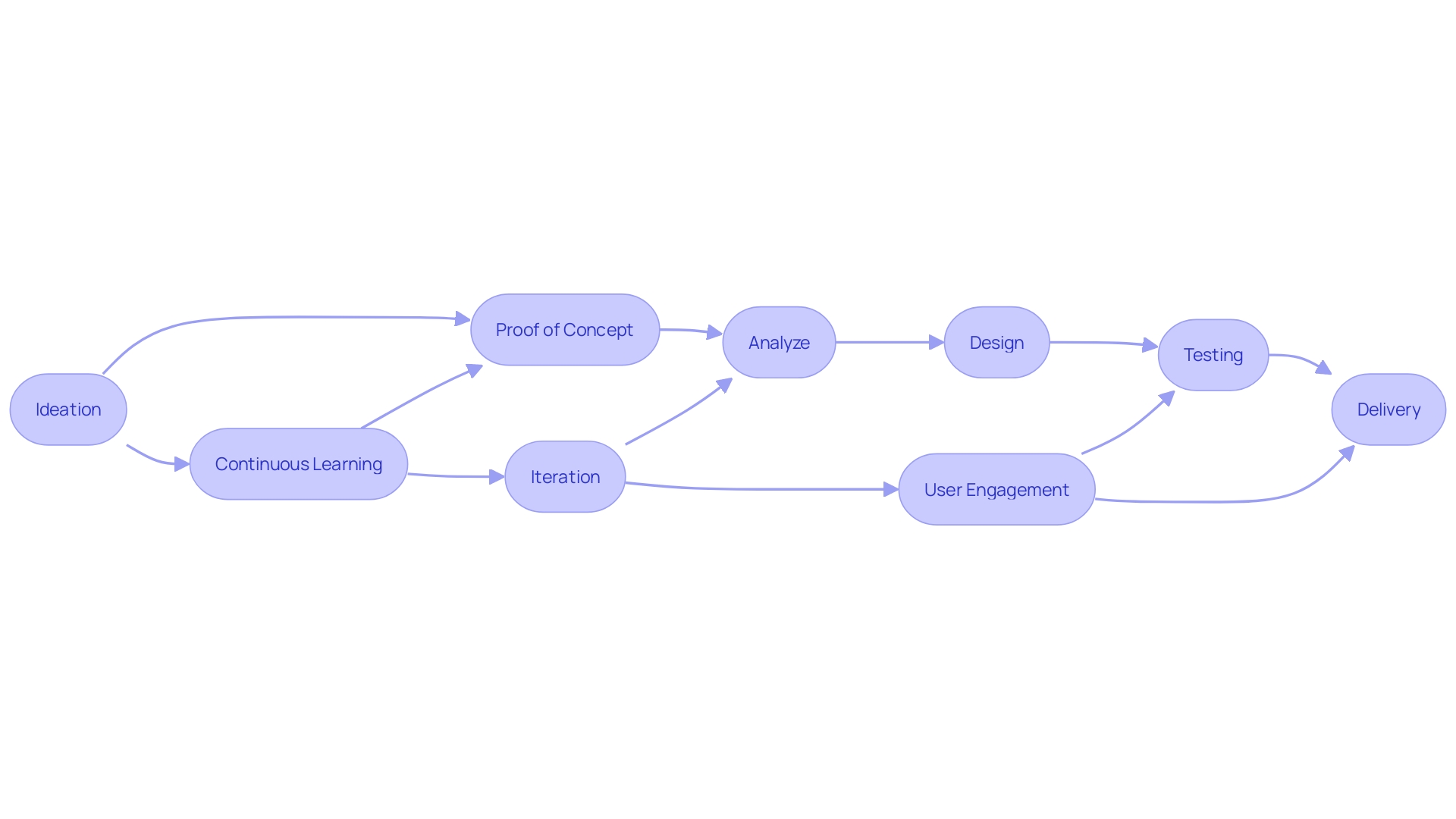
Conclusion
In conclusion, a Proof of Concept (POC) is a crucial step in validating the feasibility and functionality of new technologies or solutions. It involves conducting a small-scale experiment to determine if an idea can be successfully implemented.
By prioritizing a POC, businesses can mitigate risks, identify challenges early on, and align their projects with strategic objectives. A successful POC requires clear objectives and success criteria, focusing on the technical aspects without getting sidetracked by business value or ROI.
It is important to involve users throughout the process to ensure that the final product meets their needs and expectations. Collaboration and communication are key elements of a successful POC.
Engaging stakeholders and subject matter experts fosters a collaborative decision-making process and helps address potential questions and concerns. Thorough planning, selecting the right technologies, setting a realistic scope, and defining key metrics are essential best practices for a successful POC.
Additionally, documenting learnings and sharing them with stakeholders ensures that knowledge is captured for future projects. By following these best practices and leveraging Agile methodologies, businesses can transform their vision into a tangible, functioning reality. A well-executed POC not only validates technical feasibility but also demonstrates the potential value of an idea through user-centric problem-solving. Ultimately, a POC serves as a strategic investment that aids in cost efficiency, risk mitigation, and informed decision-making. It allows businesses to navigate the complexities of new technologies before committing to full-scale implementation. With careful planning and execution, a POC can pave the way for successful innovation in today's rapidly evolving digital landscape.
Transform your vision into reality with our Agile development solutions.





